- Growing Houseplants
- Indoor Garden Ideas
- Cactus & Succulents
- Houseplants Care
- Flowers & Blooms
- Gardening Guide
- Plant Care and Tips
- Beans/Fruit Vegetables
- Companion Planting
- Culinary Herbs
- Flowering Herbs
- Garden Design
- Gardening Ideas
- Growing food
- Growing Trees and Shrubs
- Leafy Vegetables
- Medicinal Herbs
- Patio Gardening
- Root Vegetables
- Shade Plants
- Temperate Fruits
- Tropical Fruits
- Balcony Gardening
- Container Fruits
- Container Gardening Ideas
- Container Herbs
- Container Vegetables
- Rooftop/Terrace Gardening
- Urban Gardening
- Vertical Gardening
- More Than Gardening
- Best and Top of Gardening

- Container Gardening
- Indoor Gardening

Is Wandering Jew Toxic to Cats & Dogs?

2-Minute Read
Wondering is wandering jew toxic to cats and dogs discover the answer about this wonderful houseplant in our informative post.
If you have both a cat or dog and a wandering jew plant, then this question must have crossed your mind– Is Wandering Jew Toxic to Cats and Dogs ? Being a plant and pet lover you must be concerned for both, and you’re right. Well, this article will enlighten you!
Also Read : Can Cats Eat Rosemary?
What is a Wandering Jew Plant?
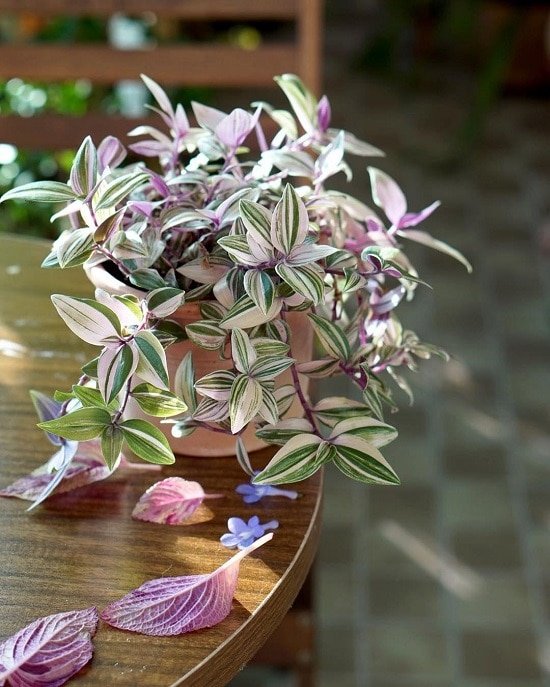
The Wandering jew ( Tradescantia ) is a warm climate tropical plant. This name is used for many different species in the Tradescantia genus that includes approx 75 herbaceous perennial species. Some of them are considered as invasive weeds, and some are popular as outdoor garden plants. Many are popular indoor plants for containers. You can learn about the most popular varieties here .
It’s an easy to grow plant, which can tolerate both sun and shade. However, the best growth is observed in partial shade and slightly moist soil. Well-drained potting soil and warm surrounding is favorable for indoor wandering jews. You can grow in window boxes, hanging baskets and creative pots. They look best cascading down from a height.
Also Read : 19 Low Light Indoor Plants Safe for Cats and Dogs
Is Wandering Jew Toxic to Cats?

According to the ASPCA ( American Society for the Prevention of Cruelty to Animals ), the wandering jew can be toxic to cats, dogs, and horses as it contains calcium oxalate crystals in leaves and stems. It may not seriously injure your pet but still chewing it can cause discomfort. This mildly toxic plant can cause skin or bowel irritation in cats. If your cat or dog has ingested any part of the plant; particularly the stem , then it can cause diarrhea or vomiting.
Also Read : Is Frankincense Safe for Cats?
Treatment of Wandering Jew Poisoning in Cats

If your cat shows symptoms like skin allergy or irritation in the abdomen, paws, anal area, and scrotum. Then try any of these following solutions.
- Give a bathe to your feline if there is any skin allergy or irritation.
- If you observe any digestive system related problem in your pet, then consult your regular vet for this.
- Let your cat drink enough water and avoid any movement.
- You can also apply aloe vera gel to the allergic area.
Also Read : Can Cats Eat Watermelon?
Protecting Your Pets from Wandering Jew Plants
You can protect your cats and dogs from wandering jew plant or vice versa by locating it in an area which is out of their reach. Growing it in hanging baskets is one of the resorts. If the long trailing vine falling below, keep them short by pruning wandering jew from time to time.
Know the Names of 11 Cat Safe Succulents here
Watch this video for more information.
Recent Posts
What to do if mums not blooming to boost flowering: 6 tricks, 9 full sun hosta alternatives, what to do with overgrown boxwood 8 ideas, 13 christmas cactus facts you didn’t know, 20 perennials that bloom multiple times a year, why reduce watering in fall and winter, 10 weeds that make great fertilizers, do this after buying orchids to ensure longevity, join our 3 million followers:, related articles, how to keep cut flowers fresh longer: 9 pro tips, 9 edible orchids you can eat and their uses, how to have a rat free garden: 9 tricks that work, 11 poisonous plants in minnesota to be aware of, what does a cactus symbolize.
Good and useful article for pet owners, but the term Wandering Jew is considered offensive in these more enlightened times.
People need to get over this stupidness and everything being offensive. Covid has given them too much time on their hands….Next they will want to change Betty White’s name or Clint Black.
Yes, thank you. You’re absolutely spot on with that. Nowadays people are offended by everything…and I mean EVERY LITTLE THING. How many names have to be changed to appease everyone? It’s ridiculous and not worth the hassle.
Just say you’re anti-semitic
Sometimes names give honor ,why does everyone think everything is always meant to offend. Sometimes it neither, its just what it is called.
Not Truly Offensive…
I’m a Jew and I have moved from City to city in my life only five times
yet I consider MySelf a Wandering Jew!!!!!
My plant is sitting in water at the moment and my cat decided to drink the water, will this harm him?
I see your question was written in 2021. I’m sure you have answered your question.
You would most likely notice symptoms in your cat if you are observant regarding it’s behavior. My cat has been feeling sick for a week and I’ve just discovered the Wandering Jew is the reason. I got some clippings a week ago and on the drive home he must have eaten some as he was free in the car. He is improving daily, but I will take him to the vet tomorrow for further evaluation.
LEAVE A REPLY Cancel reply
Save my name, email, and website in this browser for the next time I comment.

Get the Best of BalconyGardenWeb Directly in your inbox.
POPULAR CATEGORY
- Best and Top of Gardening 1704
- Flowers & Blooms 718
- Growing Houseplants 606
- Gardening Guide 446
- Gardening Ideas 404
© 2023 Balcony Garden Web | All rights reserved
- Privacy Policy
- Terms of Service
- Feedback Page

Is Wandering Jew Poisonous to Cats? [Explained]

Is wandering jew toxic to cats? Yes, Wandering jew is a midly toxic plant for cats and other pets. Although it is generally not life-threatening, cats that consume the sap of wandering jew plants can experience skin irritation and bowel irritations causing vomiting or diarrhea.
Having plants and pets in the same house makes you wonder whether they are safe companions. Not only do you have think about whether houseplants are potentially toxic for your pet but also whether your pet can harm the plant.
In the case of wandering jew, they are best kept separate. But what happens when you already have both in the house?
Read on to learn more about wander jew and what you need to know if you have cats as pets.
What Is Wandering Jew?
Wandering Jew is an umbrella term for many different species of the Tradescantia genus, a tropical herbaceous plant originating in central and Southern America. It is a relatively easy plant to take care of, making it a popular houseplant.
Depending on the specific species, it can be a lovely flowering plant or a trailing plant. Some species are also considered invasive species and are treated as weeds.
Most Common Types of Wandering Jew
- Tradescantia Fluminensis
- Tradescantia Pallida
- Tradescantia Zebrina
Tradescantia Flumensis: Evergreen perennial plant with oval green and lilac striped leaves. It produces a white flower with 3 petals.
Tradescantia Pallida: Long pointy purple leaves but the tips may remain red or green. Produces 3-petal flowers in a variety of colors, purple, white or pink.
Tradescantia Zebrina: Evergreen perennial vining plant with multi-color leaves ranging between green, gray and purple. The leaf center features 2 whitish gray stripes and it sometimes produces pinkish flowers.
Other Common Names
Tradescantia Flumensis:
- Small-leaf spiderwort
- River spiderwort
- Wandering willie
- Wandering gypsy
- Wandering trad
Tradescantia Pallida:
- Purple Queen
- Purple Heart
- Purple Secretia.
Tradescantia Zebrina:
- Zebrina pendula
Is Wandering Jew Toxic for Cats?
The plant sap of wandering jew is irritating to the skin and it can cause bowel irritations as well, if it is consumed by your cat. That is why wandering jew is considered a mildy toxic plant for cats, dogs, horses and other pets but also in humans.
The plant sap contains calcium oxalate crystals, that is what causes the allergic reaction in cats. The sap is present in the leaves but most of it is in the stem.
If your cat gets any of the sap on their skin, it can cause a skin rash, similar to dermatitis. If your cats nibbles on the plant and ingests some of the sap, it can cause bowel irritations.
These are possible symptoms of contact with wandering jew sap in cats.
- Skin irritations, especially on belly, paws, chin, groin
- Allergic skin reaction
If you notice any of these symptoms in your cat, notify your vet. The vet can tell you how to relieve the irritations and what to do if you cat is showing symptoms of bowel irritation.

How to Keep Your Cat Away from Wandering Jew Plants
Since the sap of wandering jew is toxic to cats, it is important to prevent them from coming into contact. However, this is easier said than done.
Cats are naturally agile creatures and masters of reaching difficult places. You also cannot keep an eye on them 24/7 to prevent them from scratching at or nibbling at the houseplant.
If you place the plant on a surface, chances are that your cat can find a way up there. The best way to keep your cat and houseplant safe, is to hang it somewhere your cat cannot jump at.
Plant baskets that hang from the ceiling are your best bet. Make sure there are no other nearby surfaces that you cat could use to get a good jump at the plant from.
Tradescantia like lots of sunlight so hang it near a window. Remember to prune the trailing vines, otherwise your cat might still get at them.
What to do if Your Cat Eats Wandering Jew
If your cat has eaten a wandering Jew plant, it is important to monitor your cat for any signs of illness. The wandering Jew plant is not toxic to cats, but it can cause digestive upset if ingested in large amounts. Symptoms of digestive upset in cats may include vomiting, diarrhea, and loss of appetite.
If your cat is showing any of these symptoms, or if you are concerned about your cat’s health, it is important to contact your veterinarian for further advice. Your veterinarian can assess your cat’s condition and recommend any necessary treatment.
In the meantime, you can try to prevent your cat from eating any more of the plant by keeping the plant out of reach or by placing a physical barrier around it. You can also consider replacing the wandering Jew plant with a safer, non-toxic alternative.
Other Toxic or Poisonous Plants for Cats
The ASPCA has a long list of common houseplants that are toxic or poisonous for cats . Here is just a short selection of the plants on that list.
- English Ivy
- Leopard Lily
- Monstera Deliciosa
- Succulents (not all species)
- Snake plants
Frequently Asked Questions:
What succulents are poisonous to cats.
Several types of succulents are poisonous to cats. These include:
- Cotyledon Pendens
- Crassula (Jade)
- Pachypodium
- Sansevieria
What Plants Are Cat Friendly?
Some cats enjoy scratching at or nibbling on houseplants which is why it is important to only bring in houseplants that are safe and non-toxic for your cat. This is a non-exhaustive list of 10 common houseplants that are safe for cats:
- Air plants (Tillandsia)
- Aluminium plant
- Boston Fern (note: not all ferns are cat friendly)
- Friendship plant
- Lace Flower Vine
- Lipstick plant
- Parlor palm
- Polka Dot Plant
- Spider plant
Is Wandering Jew Toxic to Humans?
Just like in pets, the calcium oxalate crystals in the sap of wandering jew plants can cause skin irritation. Humans can develop dermatitis on the areas of skin that came into contact with the sap.
To be safe, always wear gloves when pruning a wandering jew plant and properly clean your tools afterwards. Never ingest any part of the plant.
The wandering jew species are popular houseplants because they are generally low maintenance but they are not cat friendly plants. The plant sap contains calcium oxalate crystals which can cause skin and bowel irritations in cats other pets and even in humans.
Since cats sometimes enjoying playing with houseplants, it is important to be aware of the risks if you choose to keep one in the house. Make sure you keep the plant in a spot that your cat cannot reach.
Watch out for symptoms such as irritated skin, vomiting and diarrhea in your cat. This may be a sign that they came into contact with wandering jew plant sap.
About The Author
Claire Jacobs
Related posts.

Is Botrytis Harmful to Humans? Our Top Prevention Tips!
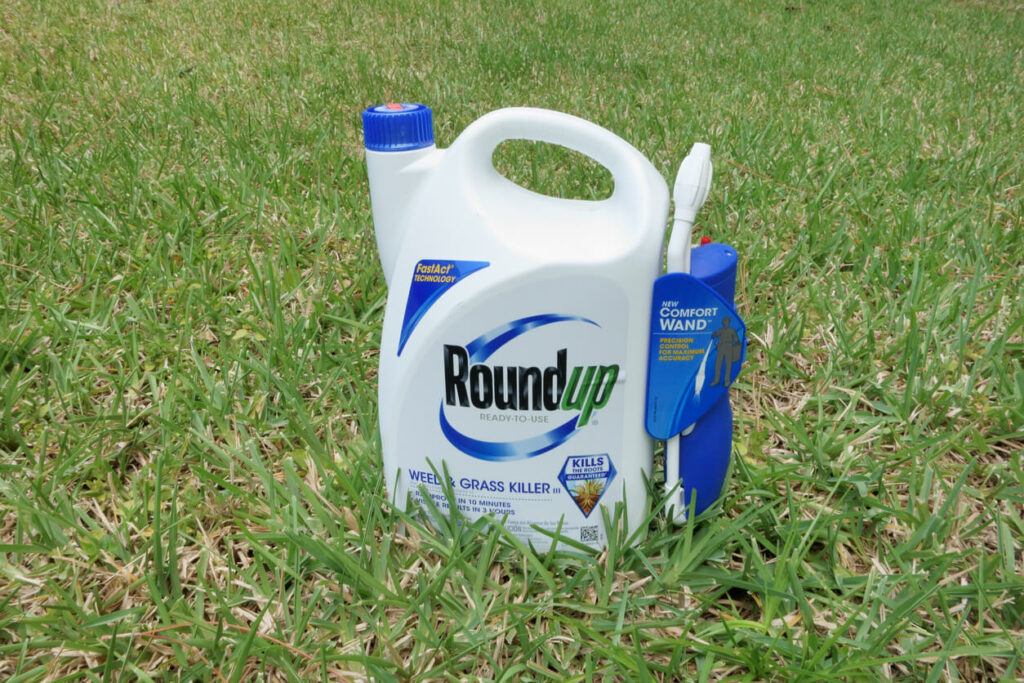
How To Dispose of Roundup Safely [4 Important Steps]
Leave a comment cancel reply.
Your email address will not be published. Required fields are marked *
Save my name, email, and website in this browser for the next time I comment.

Is Wandering Jew Toxic To Cats
Wandering Jew is a trailing vine; thus, it can be easily accessible to pets. Cats are naturally curious and often chew on plant leaves. Are you a cat owner worried about your furry friend’s safety? One question must have crossed your mind: are Wandering Jew plants poisonous to cats and dogs?
According to the American Society for the Prevention of Cruelty to Animals (ASPCA), a Wandering Jew plant is toxic to cats, dogs, or horses. Now, you’ll learn the symptoms of Wandering Jew poisoning and see how to provide proper treatment.
In our guide, you can learn more about are the plants toxic to cats and dogs and what can happen if they face exposure to any part of the plant. By the end, you can better understand why to keep pets from Wandering Jew plants. Also, you’ll see the symptoms when a cat or dog gets affected by this popular houseplant. (Learn How To Pinch Wandering Jew )

What is a Wandering Jew Plant
This common houseplant, scientifically known as Tradescantia zebrina, is a herbaceous perennial characterized by its trailing vines and vibrant purple and green leaves . The herbaceous plants are common as long trailing indoor plants with striped leaves.
It is indigenous to Mexico, Central America, and South America and is a member of the Commelinaceae family.
The plant’s rapid growth and dissemination capacity gave rise to the term “Wandering Jew.” The plant is called zebrina because of its velvety leaves, which also have stripes that resemble zebra stripes.
Is Wandering Jew Toxic to Cats
If you have a cat and a dog and a Wandering Jew or other plant and pet in your home, you’ll need to understand if the long trailing vine is toxic or poisonous. If your feline companion has ingested this trailing plant, it’s essential to be aware of the poisoning symptoms. These can include vomiting, diarrhea, and drooling.
It’s crucial to note knowing whether it is poisonous or non-toxic could make a difference with the well-being of your cat.
Symptoms of Ingestion
If your cat consumes Wandering Jews (Speedy Henry), you might observe a number of toxicological signs. Gastrointestinal distress is one common sign of wandering jew ingestion in cats.
Your cat can vomit, have diarrhea, or both. Lethargy and weakness are two symptoms of disease that your cat may display. These signs could point to a more serious ailment, such as liver or kidney disease.
Large amounts of roaming jew can cause neurological problems in cats, including tremors, seizures, and trouble walking. To ensure accurate diagnosis and treatment, it’s critical to seek quick veterinarian care if you see any of these symptoms in your cat. (Read Are Plumerias Toxic To Dogs )
Treatment Options for Poisoning
If your cat has been harmed by wandering jew sap, you can investigate other treatment methods. The first thing you need to do is call your vet right away. They will be able to give you specific advice based on your cat’s symptoms and overall health.
Sometimes, a doctor may tell you to make yourself throw up, but you should only do this under their watch. In order to aid in the removal of any lingering toxins from the stomach, once there are signs of illness contact your veterinarian may also prescribe activated charcoal.
To assist flush out the toxins and support your cat’s hydration, intravenous fluids can be required. It’s crucial to carefully follow your veterinarian’s recommendations and closely monitor your cat while it’s receiving therapy.

Symptoms of Wandering Jew Poisoning in Cats
Wandering Jew is a common house plant that can cause mild toxicity in cats and dogs. The plant contains calcium oxalate crystals, which can cause skin or bowel irritation if ingested. While the plant is mildly toxic, it’s important to note that it can still cause symptoms in pets.
Although the plant might sedate cats, they might also display signs of lethargy or weakness. Other neurological symptoms could include tremors, ataxia, or seizures. Loss of appetite and paw or skin irritations are also possible.
To protect your cats and dogs from Wandering Jew, it is recommended to keep the plant out of their reach and to locate it in an area where your dog or cat cannot access it.
If you observe any digestive system related problems in your pet, it is crucial to seek veterinary care immediately. Additionally, pruning the plant to keep its trailing vines short can help prevent your pets from consuming it. It’s always better to be safe and keep potentially toxic plants away from your pets. (Read Majesty Palm Cats )
Treatment of Wandering Jew Poisoning in Cats
Wandering Jew, a highly toxic plant, can cause cat poisoning if ingested. It is essential to keep this vining plant out of reach from pets, as it is also known to be toxic to dogs. If a cat eats wandering jew, a cat shows symptoms like skin allergies or irritation, particularly in the anal area or scrotum.
In some cases, the cat may also experience irritation in the abdomen.
If you suspect your cat has been poisoned by wandering Jews, seeking immediate veterinary attention is vital. You can also contact the pet poison helpline for further guidance. While waiting for professional help, you can try any of these following solutions to mitigate the effects of the poisoning.
Keep the affected cat away from the plant and observe any digestive system-related problems. Additionally, you can help alleviate skin irritation by gently cleaning the affected area with a mild soap and water solution.
Keep them short by pruning to make them less accessible to your pet. Remember, prevention is vital, so it’s crucial to educate yourself about other potentially poisonous plants and keep them out of your pet’s reach.
How To Protect Your Pets from Wandering Jew Poisoning?
To protect your pets from Wandering Jew poisoning, creating a safe environment for them is essential. Start by removing any Wandering Jew plants from your home or garden. If you have neighbors with a Wandering Jew, consider fencing off your yard to prevent your pets from accessing those areas.
Always supervise your pets when outside, and keep them on a leash to ensure they don’t come into contact with this toxic plant.

Conclusion: Is My Houseplant Poisonous To Cats?
In conclusion, if you ask, is this plant toxic to my pet? Cat owners must know that the Wandering Jew plant can be toxic. Symptoms of poisoning may include vomiting, diarrhea, and lethargy.
If you suspect your cat has ingested this plant, seek immediate veterinary care. To safeguard your pets, keep the Wandering Jew plant out of their reach and consider pet-friendly alternatives.
Remember, protecting our beloved feline friends goes beyond physical safety; it reflects our responsibility as caretakers to make areas safe for cats. (Read Is Stonecrop Poisonous To Dogs )
Can Cats Safely Eat or Chew on the Leaves of a Wandering Jew Plant?
Cats should not eat or chew on the leaves of a wandering jew plant. Keeping your furry friend safe is vital, as this plant can be toxic to cats.
How Quickly Does a Cat Show Symptoms of Wandering Jew Poisoning After Ingestion?
You want to know how quickly a cat shows symptoms of wandering jew poisoning. The onset of symptoms can vary but typically occurs within a few hours to a day after ingestion.
Are There Any Home Remedies or Natural Treatments for Wandering Jew Poisoning in Cats?
There are no home remedies or natural treatments for wandering jew poisoning in cats. You must seek immediate veterinary help if you suspect your cat has ingested this plant.
Can Wandering Jew Poisoning Be Fatal for Cats if Left Untreated?
Wandering Jew poisoning can be fatal for cats if left untreated. It’s essential to recognize the symptoms and seek immediate veterinary care. Delaying treatment may exacerbate the toxicity and increase the risk of fatality.
Are There Any Long-Term Health Effects for Cats Who Have Been Poisoned by Wandering Jew?
Long-term health effects may occur in cats poisoned by Wandering Jew. It is essential to seek veterinary care promptly to minimize potential complications. Untreated poisoning can lead to severe illness or even death.

With over 20 years of hands-on gardening and landscape design experience, Tim Graham, the founder of YardandGardenGuru.com, is dedicated to sharing expert advice and fostering a vibrant community for garden enthusiasts. His award-winning designs and sustainable practices reflect a deep-rooted passion and expertise in horticulture. Connect and cultivate your green thumb with Tim!
Leave a Comment Cancel Reply
Your email address will not be published. Required fields are marked *
Save my name, email, and website in this browser for the next time I comment.
Home » House Plants » Wandering Jew
Is The Wandering Jew Plant Poisonous or Toxic?
You may have heard Wandering Jew (Tradescantia zebrina) is edible, but this is entirely incorrect.
This misunderstanding comes from the fact the plant shares the common name, Spiderwort, with a couple of other plants in the same genus, which are edible.

The fact is, Wandering Jew (and several similar poisonous plants in this genus) contain very irritating sap, while the plants sharing their common name (Tradescantia Virginiana and Tradescantia ohiensis) have edible flowers, stems, and leaves.
These edible plants may also be called Blue jackets or Day flowers.
What Parts Of The Wandering Jew Plant Are Poisonous or Toxic?
The sap of most members of the Tradescantia genus is irritating to the skin.

The American Society for the Prevention of Cruelty to Animals ASPCA does not specifically list Tradescantia zebrina as toxic, and it does list a close relative, Tradescantia fluminensis (which also goes by the common name, Wandering Jew), as being a skin irritant to cats, dogs, and horses.
What Are The Symptoms Of Poisoning?
The sap contains calcium oxalate crystals that can cause allergic reactions, including dermatitis in people and pets like dogs, cats, horses, and other living things.
It is unclear whether ingesting the sap would cause serious effects, but at a bare minimum, it would surely cause mouth and throat irritation, vomiting, diarrhea, respiratory failure, incoordination, tremors, abnormal heart rate, seizures, liver failure, and nausea.
Although there is little information regarding the effects of Wandering Jew when ingested, it is worth noting the sap of this toxic plant and its dark green leaves are used in a wide variety of folk medicines in many parts of the world.

Prepared as a tea, a compress, or a decoction, it is said to be an effective treatment against a wide array of ailments, including:
- High Blood Pressure
- The Common Cold
- Kidney Stones
- Tuberculosis
The sap is also said to be effective as an antibacterial agent and an antioxidant.

While it’s hard to know whether or not these reports are true, it is worth noting that frivolous use of folk cures is ill-advised, and care should be taken when handling vines used this way.
How To Protect Yourself When Handling The Wandering Jew Plant
The problem is most members of the Tradescantia genus look very much alike. Many are almost indistinguishable from one another.
This way, it’s extremely important not to gather wild or naturalized plants as food unless you are certain of what you’re doing.
If you do accidentally gather Wandering Jew flowers, leaves, and fleshy stems to add to your salad or to sauté in your stir-fry, a skin rash may be your first clue as to their unsuitability for this purpose.

If you do develop dermatitis from contact with the Wandering Jew or one of its relatives, begin by flushing the area thoroughly with cool water and then washing it with soap and lukewarm water.
This may resolve the problem.
If it doesn’t, and itching persists or blisters develop, mix a quart of cool water and a tablespoon of white vinegar and use this mixture to make a cool compress to relieve the pain and itching.
If your symptoms don’t go away within twenty-four hours, see your doctor, as he or she may want to prescribe steroids or antihistamines.
The bottom line is that even though Wandering Jew is only listed as a plant that can cause skin irritation, it’s a good idea not to eat it or any of its relatives.

Furthermore, when handling trailing plants in the Tradescantia family, be sure to wear gloves, long sleeves, and eye protection and wash up thoroughly afterward.
JOIN Our FREE Plant Care Newsletter
By entering your email address you agree to receive a daily email newsletter from Plant Care Today. We'll respect your privacy and unsubscribe at any time.
Are Wandering Jew Plants Poisonous to Cats?
If you love house plants but also have house cats, it's crucial to ensure that the former isn't toxic to the latter. The wandering jew -- formally known as Tradescantia fluminensis and also known as speedy Henry -- will harm your feline friends. So it's best to leave this one back at the greenhouse.
Advertisement
According to The Nest , the wandering jew has sap that can irritate a cat's digestive system if they consume part of the stem, but eating the leaves doesn't normally cause problems. Though we advise keeping this plant out of your cat-friendly home at all times.
Video of the Day
Wandering jews are known for their stripes of white, green, silver, and purple colors in their leaves. They also have trailing vines that flow from its base which can be tempting for cats to play with and if ingested they can get sick.
Try These Non-Toxic Houseplants Instead
There are alternative common houseplants that won't harm your cat include:
- African violets
- Ficus benjamina
- Miniature roses
- Rubber plant
- Spider plant
- True ferns, such as the maidenhair or Boston
- Venus fly trap
- Wax begonias
Always check with your veterinarian before changing your pet’s diet, medication, or physical activity routines. This information is not a substitute for a vet’s opinion.

Is Wandering Jew Poisonous to Cats and Dogs?

The Wandering Jew is poisonous for both cats and dogs.
Typical symptoms include conjunctivitis, dermatitis, itching of the skin, loss of fur and redness around the eyes.
Wandering Jew is a perennial plant that is characterized with hairless stems and leaves, It has oval, dark green leaves and white flowers with 3 petals and are native to South America.
The scientific name for this plant is Tradescantia flumeninsis. Additional name for this plant include Inch Plant, River Spiderwort, Small-leaf Spiderwort, Speedy Henry, Variegated Wandering Jew, Wandering Gypsy, Wandering Trad and Wandering Willie.
Image: Istock.com / Greenseas
Leave a Comment Cancel reply
This site uses Akismet to reduce spam. Learn how your comment data is processed .
We independently select everything we recommend. When you buy through our links, we may earn a commission.
Wandering Jew: A Magnificent Cascading Houseplant
Wandering Jew, or spiderwort plants, are popular houseplants loved for their beautiful purple and green variegated foliage, trailing vines, and ease of care.
- About this plant
- Plant information and care guide
Other names for this plant...
Spiderwort plant Inch plant Striped wandering Jew Purple wandering Jew Silver inch plant Wandering dude
About Wandering Jew
Wandering Jews are characterized by their striking purple, green, and silver tricolor leaves. They have recently acquired the alternative name of ‘wandering dude.’
Wandering Jew plants are known for their ability to trail and cascade, making them perfect for hanging baskets or as a trailing plant in a mixed container. They’re low-maintenance, tolerate low light levels, and are incredibly easy to propagate.
While wandering Jew plants are classified as succulents , they have slightly different environmental preferences than most succulents.
Botanical Name
The botanical name of the wandering Jew plant is Tradescantia zebrina. It is a member of the Commelinaceae family , which includes around 652 flowering plants in tropical and subtropical regions.
The wandering Jew plant is a herbaceous perennial, meaning it is a non-woody plant that lives for multiple growing seasons and dies back to the ground each winter when grown outside. As a houseplant, the wandering Jew will grow year-round but not produce much new growth in the colder months.
The wandering Jew plant is native to Mexico and Central America.
The wandering Jew plant is a trailing herbaceous perennial with long, slender stems. The leaves of the wandering Jew plant are typically lance-shaped and range in color from green to purple, with a silver stripe running down the center of each leaf.
The leaves are also slightly fleshy and covered in fine, soft hairs.
The plant produces small, three-petaled flowers that are usually pink or white but are not as showy as the foliage.
Types Of Wandering Jew Plants
Here are a few of the most popular varieties:
The most common wandering Jew plant is radescantia zebrina . It has green variegated leaves with a silver stripe down the center and purple undersides.
Tradescantia fluminensis has green leaves with white stripes down the center and are sometimes confused with Tradescantia zebrina.
Tradescantia pallida is also called purple heart or purple queen. It has purple leaves that turn almost black in bright light.
Tradescantia albiflora has green leaves with white or cream-colored stripes and produces small white flowers.
Tradescantia spathacea , or Moses-in-a-cradle, has long, pointed green leaves and produces small white flowers surrounded by a boat-shaped purple bract.
Tradescantia fluminensis , or “Variegata,” has striped leaves of green and cream.
Wandering Jew Styling
Here are a few ideas for styling your wandering Jew plant:
The cascading and trailing growth habit of the wandering Jew plant make it an excellent choice for a hanging basket. Choose a basket that matches your decor and hang it in a sunny location where the plant can receive indirect sunlight.
You may combine wandering Jew plants with other trailing or upright houseplants, such as spider plant , pothos, or fern , to create a mixed container display.
With some training, the wandering Jew plant can be grown up a trellis or other support to create a climbing effect. This is a great way to add vertical interest to your home decor.
Wandering Jew plants can be grown in a terrarium or other partially enclosed container, which creates a humid environment that the plant enjoys.
If you have a smaller wandering Jew plant, style it as a tabletop display by placing it in a decorative pot or container and using it as a centerpiece on a coffee table or dining table.
Wandering Jew plants thrive in bright, indirect sunlight but also tolerate some shade. Full sun scorches the plant leaves, so it is best to place it near a window that receives filtered or indirect sunlight. Provide some shade if you put it outside in the summer.
Wandering Jew plants prefer consistently moist, well-draining soil, so water the plant thoroughly when the top inch of soil feels dry. Avoid letting the soil dry out completely or become waterlogged, as this causes the plant to wilt or develop root rot.
Temperature
Wandering Jew plants like average room temperatures between 60 and 75°F (15 and 24°C) and tolerate a range of humidity levels. Avoid placing the plant in areas with temperature extremes, such as near drafty windows or heating vents.
Wandering Jew plants prefer moderate to high humidity, so keeping the soil evenly moist and occasionally misting the leaves to increase humidity levels is important. If the air in your home is particularly dry, place a small humidifier near the plant or group it with other houseplants to increase humidity levels.
Wandering Jew plants need a well-draining, peat-based soil with a pH between 5.5 and 6.5. Use a commercial potting mix or create your own by combining peat moss, perlite, and sand in equal parts.
As your wandering Jew plant grows, you must repot it into a larger container.
To prune a wandering Jew plant, use sharp, clean scissors or pruning shears to remove dead, damaged, or yellowing leaves. You can pinch back the growing tips to encourage new growth and branching and create a fuller, bushier shape.
When making your cuts, trim back to just above a node, a small swelling on the stem where new leaves and branches emerge.
Look for stems that have become leggy, stretched out, or are growing in an undesirable direction. Remove any dead, diseased, or damaged ones.
Wandering Jew plants do not require frequent fertilization but provide a balanced, water-soluble fertilizer every 2 to 4 weeks during the growing season (spring and summer). Avoid fertilizing the plant during the winter when it is not actively growing.
Height & Growth
The wandering Jew plant’s stems grow up to 2 to 3 feet (0.6 to 0.9 meters) in length. It can be a very fast grower during the growing season, so plan to prune it regularly to maintain the desired shape and size.
The wandering Jew plant (Tradescantia zebrina) is mildly toxic to humans and animals. The sap of the plant contains oxalates, which cause skin irritation and a rash in some individuals. Oxalates cause gastrointestinal upset if ingested, such as nausea, vomiting, and diarrhea. If ingested, the plant causes irritation and swelling of the mouth, lips, and throat.
Tradescantia zebrina is toxic to pets .
Common Problems
The common problems of a wandering Jew plant include yellowing leaves caused by over-watering, under-watering, or lack of humidity. The plant is also susceptible to pest infestation , like spider mites, aphids, and mealybugs.
How To Propagate Wandering Jew
The propagation of wandering Jew plants is achieved by taking a stem cutting and placing it in potting soil. Keep the soil moist and care for the new plant as you would for a mature wandering Jew plant.
The cutting will take root very quickly in soil or water. Many people take the cuttings from a pruning session and simply stick them back into the same pot to encourage fuller growth.
Frequently Asked Questions
Does wandering jew like sun or shade.
Wandering Jew plants prefer bright, indirect sunlight but also tolerate some shade. Direct sunlight scorches the leaves of the plant.
What is the most common type of Wandering Jew?
The most common type of wandering Jew is Tradescantia zebrina, also known as the inch plant, purple-heart, or purple queen. This plant has distinctive purple and silver striped leaves and trailing stems.
Is Wandering Jew poisonous to cats?
Yes, wandering Jew plants are toxic to pets. The plant contains compounds that cause irritation and digestive problems if ingested. Symptoms of wandering Jew plant toxicity in cats are vomiting, diarrhea, loss of appetite, and lethargy.
Articles about this plant
7 best hanging plants indoors, get your weekly fix of interior design inspiration.
Delivered to your inbox every Saturday morning

× Do you know the best pet for your personality?

What To Do If Cat Eats Wandering Jew
Wandering Jew plants are popular indoor and outdoor plants known for their vibrant purple and green foliage. However, these plants are toxic to cats if ingested. If your cat has eaten a Wandering Jew plant, it’s important to take immediate action to prevent any potential harm. In this article, we will discuss what to do if your cat eats a Wandering Jew plant, as well as provide some interesting trends related to the topic.
1. Trend: Increase in popularity of Wandering Jew plants in households
Wandering Jew plants have become increasingly popular in households due to their attractive foliage and easy care requirements. However, many pet owners may not be aware of the potential dangers these plants pose to their cats.
2. Trend: Rise in cases of cats ingesting toxic plants
With the increase in popularity of houseplants, there has been a corresponding rise in cases of cats ingesting toxic plants. It’s important for pet owners to be aware of which plants are safe for their pets and take precautions to prevent any accidental ingestion.
3. Trend: Growing awareness of pet-safe plant alternatives
As more pet owners become aware of the dangers of toxic plants, there has been a growing trend towards seeking out pet-safe plant alternatives. This includes plants that are non-toxic to cats and other household pets.
4. Trend: Increase in pet owners seeking advice on plant toxicity
Many pet owners are turning to professionals in the field for advice on plant toxicity and how to keep their pets safe. It’s important to do your research and consult with experts if you have any concerns about the safety of plants in your home.
5. Trend: Surge in online resources for pet-safe gardening
The internet has become a valuable resource for pet owners looking to create pet-safe gardens and indoor plant environments. There are numerous websites and forums dedicated to helping pet owners choose the right plants for their homes.
6. Trend: Growth in pet-friendly plant products
With the increase in demand for pet-safe plants, there has been a growth in the availability of pet-friendly plant products. These products are specifically designed to deter pets from chewing on plants or contain ingredients that are safe for animals if ingested.
7. Trend: Expansion of pet poison control services
As cases of pet poisoning from plants continue to rise, there has been an expansion of pet poison control services to help pet owners in emergencies. These services provide valuable assistance and guidance on how to handle pet poisoning incidents.
If your cat has eaten a Wandering Jew plant, there are several steps you should take to ensure your pet’s safety. First, remove any remaining plant material from your cat’s mouth and try to identify the plant. Next, monitor your cat for any signs of illness, such as vomiting, diarrhea, or lethargy. If you notice any concerning symptoms, contact your veterinarian immediately.
Common Concerns and Answers:
1. Concern: Is the Wandering Jew plant toxic to cats?
Answer: Yes, the Wandering Jew plant is toxic to cats if ingested. It can cause gastrointestinal upset, such as vomiting and diarrhea, as well as more severe symptoms in some cases.
2. Concern: What are the symptoms of Wandering Jew plant poisoning in cats?
Answer: Symptoms of Wandering Jew plant poisoning in cats may include vomiting, diarrhea, drooling, lethargy, and difficulty breathing. In severe cases, it can lead to organ failure and death.
3. Concern: How can I prevent my cat from eating toxic plants?
Answer: To prevent your cat from eating toxic plants, keep them out of reach or consider using deterrents such as bitter sprays or pet-safe plant products. It’s also important to educate yourself on which plants are toxic to cats and avoid having them in your home.
4. Concern: Should I induce vomiting if my cat eats a toxic plant?
Answer: It’s best to consult with your veterinarian before inducing vomiting in your cat. Some plants can cause more harm if they are vomited back up, so it’s important to seek professional advice before taking any action.
5. Concern: Can Wandering Jew plant poisoning be fatal to cats?
Answer: In severe cases, Wandering Jew plant poisoning can be fatal to cats. It’s important to seek immediate veterinary care if you suspect your cat has ingested a toxic plant.
6. Concern: How long does it take for symptoms of plant poisoning to appear in cats?
Answer: Symptoms of plant poisoning in cats can vary depending on the plant and the amount ingested. In some cases, symptoms may appear within a few hours, while in others, it may take several days for signs of poisoning to manifest.
7. Concern: Can I treat my cat at home if they have eaten a toxic plant?
Answer: It’s best to seek veterinary care if your cat has ingested a toxic plant. Your veterinarian can provide the appropriate treatment and supportive care to help your pet recover.
8. Concern: Are there any safe alternatives to the Wandering Jew plant for my home?
Answer: Yes, there are many pet-safe plant alternatives that you can choose for your home. Some examples include spider plants, Boston ferns, and African violets, which are non-toxic to cats.
9. Concern: How can I identify a Wandering Jew plant?
Answer: Wandering Jew plants are known for their purple and green striped foliage and trailing growth habit. They are commonly grown as houseplants or outdoor ground cover.
10. Concern: Can outdoor cats be at risk of plant poisoning?
Answer: Yes, outdoor cats can be at risk of plant poisoning if they come into contact with toxic plants in the environment. It’s important to be aware of the plants in your yard and take precautions to keep your pets safe.
11. Concern: Are there any long-term effects of plant poisoning in cats?
Answer: In some cases, plant poisoning in cats can lead to long-term health effects, such as kidney damage or liver failure. It’s important to seek prompt veterinary care to prevent any potential complications.
12. Concern: How can I create a pet-safe garden for my cat?
Answer: To create a pet-safe garden for your cat, choose plants that are non-toxic and avoid using pesticides or chemicals that could be harmful to pets. You can also create designated play areas for your cat to prevent them from coming into contact with toxic plants.
13. Concern: Can cats develop an aversion to toxic plants after ingesting them?
Answer: Some cats may develop an aversion to toxic plants after ingesting them and experiencing negative side effects. However, it’s best to prevent your cat from coming into contact with toxic plants in the first place.
14. Concern: Are there any natural remedies for plant poisoning in cats?
Answer: It’s best to seek veterinary care for plant poisoning in cats, as natural remedies may not be effective or could potentially be harmful. Your veterinarian can provide the appropriate treatment to help your pet recover.
15. Concern: Should I bring a sample of the plant to the veterinarian if my cat has eaten it?
Answer: If you can safely do so, bringing a sample of the plant to the veterinarian can help them identify the plant and provide the appropriate treatment. However, it’s not always necessary, so focus on seeking prompt veterinary care for your cat first and foremost.
In conclusion, if your cat eats a Wandering Jew plant, it’s important to act quickly to prevent any potential harm. Remove any remaining plant material from your cat’s mouth, monitor for symptoms of poisoning, and seek veterinary care if needed. By being aware of the dangers of toxic plants and taking precautions to keep your pets safe, you can ensure a happy and healthy environment for your furry friends. Remember to consult with professionals in the field for guidance and support in handling plant poisoning incidents. Stay informed and proactive in protecting your pets from potential hazards in your home.
Related Posts
Russian blue cat meow, can cats hear ultrasonic pest repellers, why do male cats have big heads, cat paws twitching while awake, do cats like wearing sweaters, can a cat live in a room, why do cats like concrete, how much does an mri cost for a cat, litter robot vs petkit, what does it mean when a cat runs sideways, how do cats flirt with each other, are forget me nots poisonous to cats, why is my cat shaking while purring, blood coming from cats mouth, are cats softer than dogs, how to tame stray kittens, how to give tylan powder to cats, can cats have brown sugar, do cats run away to die, cat hairball poop stuck.

Wandering Jew Plant – Ultimate Care Guide
By: Author Daniel
Posted on Last updated: September 18, 2023

Sharing is caring!
- Facebook 60
You are reading this guide to learn more about the Wandering Jew Plant and its care . I have had this plant at home for many years and write about all the growing aspects in this guide.
Wandering Jew Plant Care Takeaways
What is the wandering jew plant.
The Wandering Jew, or Tradescantia zebrina, by its scientific name (old name = Zebrina pendula) is native to Mexico. It is not to be confused with Tradescantia albiflora, which also goes by Wandering Jew and has very similar care needs.
Tradescantia zebrina has attractive foliage, sporting exciting zebra-patterned leaves. It also flowers. But when kept as a houseplant, this rarely ever happens. It is a fast-growing and excellent groundcover, according to the University of Florida .

W andering Jew Plant Care
To keep your Wandering Jew plant thriving, ensure it receives bright, indirect sunlight. Keep it in average room temperatures of 60-75°F (16-24°C). Fertilize once a month during spring and summer. In winter, relocate the plant to a cooler area with temperatures of 54-59°F (12-15°C).
Table of Contents
Tradescantia zebrina Growing guide
Tradescantia zebrina care is pretty straightforward, but it certainly can’t hurt to glance at the most important things to consider when caring about this herbaceous perennial plant.
So, without further ado, let’s see how you can make your Wandering Jew, aka the Inch plant, as happy as possible.
Any good potting soil will do for your Wandering Jew. For instance, this could be Miracle Gro potting soil readily available online in stores like Amazon.
But these plants not only feel very comfortable in soil but can also be kept in hydroponics .
Sunlight is a vital aspect when it comes to the well-being of most houseplants. Some houseplants do well with moderate sunlight, while others only thrive (or flower) when a certain level of sunlight is guaranteed.
The Wandering Jew does best in bright, indirect sunlight .
If you are unsure what that means, please look at our Light Levels article.
The Wandering Jew, a tropical native, thrives best when the root ball is always well moisturized. Still, waterlogging should be avoided whenever possible, as this could lead to root rot .

This tropical plant does not enjoy limy water. Use soft water whenever possible. Rainwater and distilled water are very good choices.
Temperature
People who own an Inch plant and keep it outside run the risk of exposing it to cold temperatures. This is where indoor plant owners have the upper hand.
Wandering Jews can thrive with average room temperatures of 60 to 75°F (16 to 24°C) if it doesn’t drop for long periods. Anything below 12°C for an extended period could be fatal for your Wandering Jew.
Wandering Jews prefer a humidity of around 70%
The perennial, herbaceous Wandering Jew plant is native to Mexico, Central America, and Colombia, so it should not surprise you that it likes a good deal of humidity.
To ensure high humidity levels, regularly misting your plant is a very good idea. A hand mister filled with water does the trick.
As for the location, you may want to keep your Wandering Jew in the bathroom , as this is usually the place in the house with the highest humidity.
Feed your plant once a month during spring and summer. In winter, fertilizing is not necessary.
Also, fertilization of the Wandering Jew is only necessary from the second year of cultivation or after repotting.
Propagation
It is best propagated through stem tip cuttings. Propagating the Wandering Jew is an easy task.
Wandering Jews don’t get very tall. They might reach a height of about 14 inches (36 cm) when kept indoors. They spread to about 10 inches (25 cm).
(Re)potting
The thing with the Wandering Jew is that it grows fast , hence its nickname “Inch plant.” Because of its fast-growing pace, the plant usually gets very leggy, and leaves are often lost near the base of the plant.
Repotting is pivotal for keeping the root system healthy regardless of the actual plant species. However, how often a houseplant needs to be repotted depends on various factors.
Some houseplants grow incredibly fast, so they need to be repotted often. Others, on the other hand, grow very slowly, so repotting is not a top priority.
That said, repotting your Wandering Jew occasionally is a good idea.
How long does a Wandering Jew live?
As far as the longevity of Wandering Jews goes, they often don’t get older than 2 to 3 years.

Wandering Jew Watering
Water about once every 5-7 days in spring and summer. Keep the soil slightly humid. Do not let the Wandering Jew dry out between waterings. Use your index finger to check if the soil is dry down 1-2 inches of soil (2.5 – 5 cm).
Reduce watering to every 10-14 days in autumn and winter.
Wandering Jew Propagation
The Wandering Jew roots very easily . The plant can easily be propagated through stem tip cuttings.
When propagating your Wandering Jew, make sure that your plant is in a healthy condition.
Please follow our step-to-step guide to propagate your Wandering Jew through stem tip cuttings.
Propagation through stem tip cuttings
- Identify the plant that you want to replicate. It should have healthy growth and plenty of stems.
- Make clean cuts on sections that are three to six inches in length .
- Use a sharp knife and carefully cut the leaves on the stem’s bottom half.
- If you want, you can dip the exposed end of the stem in a rooting hormone . This will speed up the rooting process. However , it is unnecessary .
- Place your stem tip cuttings into a pot with fresh soil after thoroughly watering the potting mixture.
- Use a clear plastic bag to hold in moisture, taking it off to water weekly .
- Keep your eyes on the plant for new growth . You should start to see roots in about two to three weeks . Once this happens, transfer the plant babies to a larger pot.
Note: Instead of rooting your stem tip cuttings directly in soil, you could also root them in water .
Wandering Jew Pest Control
Wandering Jews are prone to aphids and spider mites attacks. So, you will need to look out for these two little pests.
Some of these are known to cause defoliation, while others can kill the plant altogether. Depending on the severity of the infestation, you may need to use chemicals or insecticides .
Aphids on my Inch Plant
The Wandering Jew is not particularly susceptible to plant diseases or pests. Yet, you might have to deal with an aphid attack at some point. These parasites pierce the leaves of their host plant and suck their sap.
Like scale insects, they excrete sticky honeydew, by which you can immediately recognize the infestation.
Aphids can multiply explosively, especially in warm , dry environments.
As a preventive measure, ensure regular watering and occasional misting of your Wandering Jew.
The best way to combat aphids is to control them mechanically by rinsing them off the plant with water . Isolate the plant from the rest of the collection.
Pest Prevention
To prevent the Wandering Jew from pest infestations, plucking dried leaves regularly makes sense as well as using neem oil. The dried leaves lying on the substrate must be removed. Otherwise, there is a risk of rotting or infestation by parasites and fungi .
Wandering Jew Problems
Brown leaf tips.
Brown leaf tips is a very common problem with a wide variety of houseplant. Depending on the species, the causes for this problem can be very different, though.
So what causes leaves to turn brown with Wandering Jews?
My Wandering Jew has only green leaves (not enough variegation)
If you do own a variegated Wandering Jew but only see a great amount of non-variegated leaves, chances are that your plant does not get enough sunlight .
To solve the problem, allow your Wandering Jew some bright, indirect sunlight by placing it in a sunnier location.
Fading leaves
If your inch plant’s foliage is suddenly losing color and sports fading leaves, this is another sign that it does not get enough sunlight .
Dropping leaves
Dropping leaves is another very common problem many plant parents must deal with regularly . If your Wandering Jew drops leaves, this is usually due to too low or too high temperatures .
In summer , ensure your Wandering Jew is exposed to average room temperatures.
In winter , it should be kept in a cooler environment.
Is Wandering Jew care difficult?
Wandering Jews are considered low-maintenance plants and are perfectly suitable for beginners.
They do well at average room temperatures, don’t demand a very high level of humidity (which is sometimes difficult to achieve in a home environment), and it is very easy to propagate them through stem tip cuttings.
Which plant species are commonly referred to as “Wandering Jew”?
Tradescantia zebrina as well as Tradescantia albiflora.
What is the difference between Tradescantia zebrina and Zebrina pendula?
There is no difference between Tradescantia zebrina and Zebrina pendula. Zebrina pendula is just the old name for Tradescantia zebrina.
Does my Wandering Jew flower at all?
Wandering Jews are indeed flowering plants. However, when kept indoors, they very rarely flower.
How long can you keep a Wandering Jew?
If you don’t propagate your Wandering Jew, you can keep it for about three years. After that period, the quality of your Wandering Jew will most likely decrease. If you regularly propagate your leafy friend through stem tip cuttings, you can keep it indefinitely.
Any display tips for Wandering Jews?
Wandering Jews look great in hanging planters!
Is the Wandering Jew toxic to cats?
The Wandering Jew plant is toxic to cats. Therefore, you have to keep your cat away from this plant.
Is the Wandering Jew toxic to dogs?
Yes, the Wandering Jew plant is toxic to dogs. Therefore, you must ensure your dog does not come in contact with this plant.

What are the health benefits of Tradescantia zebrina, if any?
Not only is The Wandering Jew a beautiful houseplant famous for its striking foliage, but it also presents several health benefits for humans. It is especially known for its antioxidant and antibacterial activity, and it is widely used in Traditional Medicine in several countries. Tradescantia zebrina is also believed to be a valuable source for treating kidney diseases.
The Last Zebrina
The Wandering Jew is a great houseplant that looks stunning in hanging planters. Its care is easy apart from its humidity-loving nature.

Daniel has been a plant enthusiast for over 20 years. He owns hundreds of houseplants and prepares for the chili growing seasons yearly with great anticipation. His favorite plants are plant species in the Araceae family, such as Monstera, Philodendron, and Anthurium. He also loves gardening and is growing hot peppers, tomatoes, and many more vegetables.
Related Posts
(image credits, IG:oohyouplantsy) I have a hide-away in my home that I escape to for…
How much light does my plant need? This is a relevant question as too little…
I love plants that offer an eye-catching burst of color. They sure put a smile…
Most of the 45+ species in the Monstera genus are famous for their unusual leaves…
One of the rarest Anthuriums is the Anthurium Reflexinervium, a gorgeous plant naturally found only…
Hoya Lauterbachii belongs to Hoyas's family, which are known to be the largest plants on…
15 Plants Toxic to Cats and Dogs
Written by Heather Burdo
Updated Jul 31, 2023
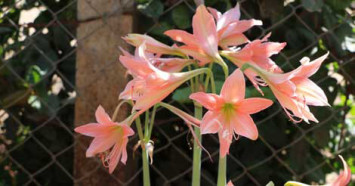
Plants are in most homes and provide a variety of benefits for your family. They even add to the decor. However, certain plants aren’t ideal around your furry family members. With such an extensive list of plants toxic to cats and dogs, it’s critical to know which ones you should keep out of reach of your pets, or better yet - pass on to someone else who doesn’t have animals.
Here are some specific plants you should keep out of your home/garden if you have pets and the symptoms you should be on the lookout for in case your pet gets into one of them, whether at home or somewhere else.
Toxic Plants for Pets & Symptoms After Exposure
1. african wonder tree.
This plant has ricin, making it one of the most highly toxic house plants to dogs and cats. Ricin is a toxic compound, which inhibits protein synthesis. Although the entire plant is toxic, the beans are exceptionally dangerous as that’s where the ricin is.
Symptoms : Weakness, excessive thirst, loss of appetite, trembling, difficulty breathing, seizures, bloody diarrhea, colic, loss of coordination, and death.
2. Alocasia
This plant may also be called elephant’s ear. What makes this plant so toxic is the presence of insoluble calcium oxalates.
Symptoms: Swelling and pain of the mouth, excessive drooling, difficulty swallowing, vomiting, and oral irritation.
Saponins and anthraquinones make this plant toxic. Aloe is a popular household plant, so if you must have it in a home with pets, keep it out of reach of your curious furry friends.
Symptoms : Lethargy, diarrhea, and vomiting
4. American Holly
Some other names you may know this plant by are English holly, inkberry, European holly, winterberry, and Oregon holly. This plant belongs to the aquifoliaceae family and is considered toxic due to saponins.
Symptoms : Depression, diarrhea, and vomiting
5. Apples, apricots, cherries, peaches, & plums
The danger with these fruits is cyanogenic glycosides in the seeds, pits, and leaves. Keep them out of your pet’s reach and always core them if you want to share them as a snack.
Symptoms : Dilated pupils, shock, panting, and difficulty breathing
6. Barbados Lily
Some additional names for this plant are fire lily, ridderstjerene, lily of the palace, and amaryllis. The Barbados Lily belongs to the Amaryllidaceae family and is toxic due to lycorine and other alkaloids.
Symptoms : Diarrhea, vomiting, low blood pressure, cardiac arrhythmias, tremors, convulsions with large ingestion, and salvation
With over 1,000 species, it’s important that the household plant you choose isn’t part of the begoniaceae family. Because of the soluble calcium oxalates, this plant is toxic to both dogs and cats. The most toxic part of the plant is underground but you should still keep your pets away.
Symptoms : Salivation and vomiting
8. California Ivy
What makes this common household plant so toxic is the triterpenoid saponins. This plant is part of the Hedera helix family and it can go by other names such as sweetheart ivy, English ivy, needlepoint ivy, glacier ivy, and branching ivy.
Symptoms : Diarrhea, hypersalivation, abdominal pain, and vomiting
9. Nightshade
Also known as black nightshade or deadly nightshade, this plant is part of the solanaceae family. Solanine, atropine, and saponins make this plant toxic.
Symptoms : Reduced heart rate, dilated pupils, weakness, behavioral changes, confusion, drowsiness, diarrhea, severe gastrointestinal upset, inappetence, and hypersalivation.
10. Rhubarb
Also known as pie plant, rhubarb belongs to the polygonaceae family. Toxicity comes from the soluble calcium oxalates.
Symptoms : Salivation, tremors, and kidney failure
11. Sacred Bamboo
Cyanogenic glycosides make this plant toxic. The sacred bamboo is also known as nandina or heavenly bamboo and is part of the Berberidaceae family.
Symptoms : Respiratory failure, coma, seizures, incoordination, and weakness. Death is rare in pets.
12. Sago Palm
Part of the Cycadaceae family, Sago Palm is also known as cycads, zamias, cardboard palm, and coontie palm. The cycasin in the plant is what makes it toxic.
Symptoms : Liver failure, liver damage, coagulopathy, bruising, hemorrhagic gastroenteritis, increased thirst, icterus, melena, and vomiting
13. Tarragon
The toxicity in this plant comes from the essential oils. Other names for Tarragon include Estragon and French Tarragon.
Symptoms: Diarrhea and mild vomiting
14. Tomato Plant
This well-known plant is part of the solanaceae family and is toxic due to the solanine. It’s important to note that ripe fruit is non-toxic.
Symptoms : Slow heart rate, dilated pupils, weakness, depression, severe gastrointestinal upset, inappetence, and hypersalivation.
15. Wandering Jew
Wandering Jew can also be known as speedy Henry. This plant belongs to the commelinaceae family.
Symptoms : Dermatitis
What to Do if Your Pet Gets Into a Toxic Plant
Now that you know what plants to look out for, what happens if your cat or dog gets into toxic plants? First and foremost, get your pet away from the plant and check to see if they’re breathing and behaving normally. Call the Pet Poison Helpline (855-213-6680) or get in contact with a veterinarian for further instruction. Depending on the plant that poisoned your pet, you’ll want to begin at home treatment as soon as possible or get them into a veterinary hospital immediately.
No matter the situation, you’ll find comfort in knowing that full coverage pet insurance will cover your pet’s medical expenses in the event of accidental exposure to a toxic plant. Embrace offers unique coverage plans for dogs and cats that covers every unexpected accident and illness. Learn more about our pet insurance options and request a quote today to get started.
Grow. Play. Every Day!

- House & Home
- Houseplants
Wandering Jew Care: How to Grow a Flourishing Inch Plant (Tradescantia Zebrina)
Tradescantia zebrina (commonly known as wandering Jew, spiderwort, or inch plant) is popular for a reason: This beginner-friendly houseplant is low-maintenance and grows quickly. It’s also super easy to propagate more plants so you can fill your home with more of the colorful striped foliage the species is known for.
Written by Linda Ly

When it comes to vigorous, colorful, and easy-to-grow hanging houseplants, there aren’t many that can compare to Tradescantia zebrina (known more commonly as wandering Jew—and I’ll touch on the history of that name below). Whether you’re a houseplant beginner or a veteran, most indoor gardeners have owned one of these potted plants at some point.
Keep reading for everything you need to know about Tradescantia zebrina and growing this stunning houseplant in your own home.
Disclosure: If you shop from my article or make a purchase through one of my links, I may receive commissions on some of the products I recommend.

About inch plants
Natural habitat.
Tradescantia zebrina is a native of Central and South America, from Mexico down to Colombia, as well as the Caribbean. Here, it forms part of the undergrowth in lightly forested and often very moist areas. It can form very dense, wide mats thanks to its creeping growth pattern and ability to throw roots extremely quickly.
Unfortunately, its vigorous growth has also made Tradescantia zebrina an invasive plant in some regions. This includes Hawaii, Brazil, and Australia, where the species easily takes hold in moist, forested areas.
As a 2019 study carried out in the Brazilian Atlantic Rainforest notes, this is problematic due to the species choking out native plants.
Some of the above was caused by careless gardeners allowing bits of the plant to get into the wild, where they quickly root. If you’d like to grow spiderworts like this one in your garden, please make sure to dispose properly of any trimmings left after pruning!
This also applies to zebrina’s popular cousins, like Tradescantia fluminensis, T. pallida, and T. spathacea.
Description
It’s not difficult to see why Tradescantia zebrina gained popularity as a houseplant. Wandering spiderwort plants (not to be confused with spider plants , another beginner-friendly species) are low-maintenance and grow just about anywhere—they even just grow in water !
Easy care and quick growth aside, spiderworts are also just good-looking plants. The pointed, oval leaves on thin, fleshy stems overlap slightly and are characterized by their zebra pattern in purple and silvery green. The leaf undersides are deep purple in color and the tiny, three-petaled flowers are bright pink.
Although this species is naturally a creeping plant, it’s often grown indoors in hanging planters. As long as the plant is provided with enough light, the foliage will be very dense and brightly colored, forming a spectacular waterfall that can reach more than 3 feet in length.
What’s in a name? In the case of common houseplants, sometimes a lot.
Tradescantia zebrina is a classic houseplant (I found mention of it in a 1964 German book about houseplants, but it’s probably been around longer than that!) and among most English speakers, it has long been known as wandering Jew. This is probably a reference to the “wandering” nature of the plant, as it does have a creeping growth pattern.
The legend of the wandering Jew is hundreds of years old and is now commonly considered to be rooted in antisemitism. It describes a Jewish man cursed to walk the planet until the Second Coming because he taunted Jesus on his way to the cross.
Because of this, the plant name has partly fallen out of fashion and has been the source of much debate in the plant world over the past few years.
Some plant enthusiasts have embraced the alternative “wandering dude,” which I personally think is a great option.
“Inch plant” (houseplant enthusiasts don’t agree on whether this refers to the fact that it can grow an inch a day, or that you only need an inch of stem to propagate it), “spiderwort,” or “wandering spiderwort” are also popular alternatives, though these are common names for other Tradescantia varieties, such as Tradescantia Nanouk.
The best way to avoid any confusion is to just stick to the scientific name.

Inch plant varieties
There are three subspecies of inch plant (wandering Jew): Tradescantia zebrina var. zebrina, var. flocculosa, and var. mollipila. Unsurprisingly, after it having been a popular houseplant for so many years, nurseries have also managed to create a whole bunch of cultivars through selective cultivation.
A few of the popular Tradescantia zebrina cultivars you may come across in your local plant store include, but are certainly not limited to:
- Tradescantia zebrina ‘Quadricolor’: Yep, as the name suggests, this one adds an extra color to the mix. The leaves are cream, pink-purple, light green, and dark green.
- Tradescantia zebrina ‘Burgundy’: Characterized by its very dark purple coloration.
- Tradescantia zebrina ‘Silver Plus’: Less purple, more shiny silver.
- Tradescantia zebrina ‘Red Gem’: Less silver, more intense (light) purple.
- Tradescantia zebrina ‘Purple Joy’: Less silver, more dark purple.
- Tradescantia zebrina ‘Tikal’: A rare, naturally occurring variety that collectors pay a pretty penny for.
Do keep in mind that most of these cultivars aren’t patented and the amount of mislabeling and variation within a cultivar are both huge. Just growing your wandering Jew in lower-light conditions can completely change the way it looks, so it’s not surprising that confusion sometimes reigns supreme.
Luckily, care is the same across all cultivars, so your best bet is to just enjoy your plant even if you’re not sure what Tradescantia variety you’re dealing with!
Where to buy wandering Jew plants:
- California Tropicals
- Daylily Nursery
- The Green Escape

Caring for an inch plant
Light and temperature.
It’s important to provide your Tradescantia zebrina with enough light. It’s tempting to use plants to brighten up dark, shaded spots in your home, but that just doesn’t work with this one: It loses its dense growth pattern and beautiful coloration in low light.
To prevent your wandering dude plant from growing sparse and green, place it near a window that gets bright indirect light. Some full sun isn’t a problem either, but do make sure you acclimate it gradually to a higher light location.
Temperature-wise, this species is a lot hardier than many of the tender tropicals we like to grow in our homes (like Anthurium andraeanum and Begonia maculata ).
Wandering dude plants can handle a very wide range of temps, making it perfect for those chillier windowsills that your other plants may not appreciate. Room temperature is ideal, but anything between 50°F to 85°F will keep them happy.
Water and humidity
Your Tradescantia zebrina will appreciate lightly moist soil. You can water a bit more during the summer months, when the plant is actively growing and needs a lot of moisture, and less during winter, when soil tends to take significantly longer to dry.
If you’re not sure whether it’s time to water your wandering Jew plant yet, you can always turn to the age-old trick of sticking a finger in the soil.
- If it still feels damp, wait a little longer, until the first inch or two has dried.
- If it feels bone dry, you’ve waited too long; you may also see limp leaves on your plant at this point. It’ll bounce back, but not always without lasting damage.
- If the soil feels wet, you watered too much and need to keep an eye out for root rot.
As for humidity, given its rather wet natural habitat, wandering Jew does appreciate higher air moisture levels. The great thing is, though, that it doesn’t demand it. As long as you keep its soil lightly moist and the air isn’t extremely dry, your plant should do well.
Soil and planting
Wandering Jew is not fussy about its potting mixture at all. I’ve grown it in pure houseplant potting soil with no additives. If you do want to take things to the next level, you can add some perlite and/or peat moss, although this is really not a must.
Most houseplant enthusiasts like to place their wandering Jew in a hanging planter so they can enjoy the look of the leaves cascading down. This is not a must, though. You can also emphasize the species’ creeping growth habit by filling up a large, shallow planter, growing it in a terrarium, or even keeping it in water on a semi-permanent basis.
Recommended products for wandering Jew plant care:
- FoxFarm Ocean Forest Potting Soil
- Espoma Organic Potting Mix
- Perfect Plants Organic Perlite
Fertilizing
Like most other houseplants, Tradescantia zebrina appreciates a bit of fertilizer during the growing season, which extends from spring to early fall. You can use a normal houseplant fertilizer according to the instructions on the bottle.
Don’t fertilize during the winter months unless your plant is growing well. It doesn’t need extra nutrients if it’s inactive.
Recommended fertilizers for wandering Jew plants:
- Houseplant Resource Center Liquid Fertilizer for Houseplants
- Instant Biologics Instant Plant Food (Fizzing Nutrient Tablets)
- Maxsea All-Purpose Seaweed Plant Food
Pruning
There’s a good chance you’ll have to prune your Tradescantia zebrina regularly, because as I mentioned, this is a very quick grower. It also roots very easily, so any trimmings can be replanted! I’ll describe how to do this in the section on propagation below.
Aside from stem trimming, you can remove any dead leaves, which are bound to pop up from time to time in very dense plants like this species.
Dividing or repotting
Inch plants don’t grow by producing plantlets at their base like many other houseplants (such as spider plants ) do. Instead, inch plants spread by rooting along the stems.
This means that division is not really the way to go; keeping these plants manageable is usually done through pruning. You can shape your plant by pinching off any long, leggy stems to create a fuller appearance and control its spread.
You’ll notice that Tradescantia really doesn’t mind being a bit cramped in its planter. Still, it’s a good idea to provide your plant with some fresh soil every year or two by repotting it.

Propagating an inch plant
If you’ve never propagated a houseplant before, this is truly one of the best species to start with. It’s known for rooting extremely quickly in both water and soil, meaning it’s easy to fill endless planters to keep or give away.
All you need to propagate your Tradescantia zebrina is a pair of clean scissors. Here’s how you do it:
- Snip the ends off existing branches. An inch or two with a few leaves works best.
- Remove the leaves at the bottom so part of the stem is exposed.
- Place the cutting in a glass of water to root or plant it directly in soil. You can put cuttings back in the mother plant’s pot to give her a fuller appearance on top.
- It can take a little longer during the winter months, but the first roots should appear within a week or so. You can give soil cuttings a slight tug to verify they’ve rooted.
- Once the first signs of new foliage appear, you’ll know your propagation attempt has been a success!
- If you propagated in water, you can leave the rooted cuttings in water almost indefinitely, although you can also pot them up in fresh soil.

Common questions about inch plant care
How do i make a wandering jew plant bushy.
By their very nature, wandering Jew plants are not bushy. Their creeping growth habit means they naturally grow leggy over time, especially in containers.
However, you can mimic a fuller appearance by strategically pinching off any long, spindly stems to shape the plant more. These stems can also be replanted near the mother plant.
As the baby plants grow, they’ll help fill in sparse areas and create the illusion of a bushy wandering Jew.
How long do wandering Jew plants live?
Wandering Jew plants have a limited lifespan of just a few years, and as a potted plant, you’ll notice your wandering Jew becoming very leggy after just two to three years.
Unlike other fast-growing plants that benefit from pruning, cutting back a wandering Jew doesn’t work well to renew its growth; it simply controls the spread.
The best way to keep your plant coming back year after year is to propagate new plants from stem cuttings, which—fortunately—is super easy with a high success rate.
Is wandering Jew perennial?
Wandering Jew (Tradescantia zebrina) is a trailing evergreen perennial in its native habitat (USDA hardiness zones 9 through 12). Where it’s not winter hardy, wandering Jew is grown year-round as a houseplant.
Are wandering Jew plants toxic to cats and dogs?
Wandering Jew is not considered outright toxic, but it can cause some skin irritation. If your pet gets into your plant, don’t worry too much, although it can be a good idea to have a look in its mouth to make sure there’s no excessive swelling. Be sure to offer water. To prevent skin rash, it can be a good idea to wear gloves if you need to handle your wandering Jew plant. This especially applies if you have sensitive skin.
https://www.cabi.org/isc/datasheet/110354
Racism in Taxonomy: What’s in a Name?
Chiba de Castro, W. A., Xavier, R. O., Garrido, F. H., Romero, J. H., Peres, C. K., & da Luz, R. C. (2019). Fraying around the edges: negative effects of the invasive Tradescantia zebrina Hort. ex Bosse (Commelinaceae) on tree regeneration in the Atlantic Forest under different competitive and environmental conditions. Journal of Plant Ecology, 12(4), 713-721.
Encke, F. (1964). Pflanzen fur Zimmer und Balkon; Auswahl, Pflege, Vermehrung.
I'm a plant lover, passionate road-tripper, and cookbook author whose expert advice and bestselling books have been featured in Time, Outside, HGTV, and Food & Wine. The National Parks Cookbook is my latest book. Garden Betty is where I write about modern homesteading, farm-to-table cooking, and outdoor adventuring—all that encompass a life well-lived outdoors. After all, the secret to a good life is... Read more »
We bought a full grown Bolivian Jewel mid summer last year. It was in a 14” raised pot and flowing 2 foot over the sides. It was beautiful next to our fountain outside. We live in Minnesota so we had to discard it in the late fall since we had no place to care for it in the house. Since we can’t find another like it we’d like to plant one from scratch but how. We still have the pot and riser but have no idea how to start from that. One plant, a few or just how many to make a bushy over grown plant so it looks like the one we purchased last year. Does this make sense or should we just forget it since it is already the middle of May. The greenhouse that we bought it from last summer doesn’t have any this year, just small ones in 4” pots. Thanks
If you can only grow it as an annual (and won’t be overwintering it indoors), you can plant a few smaller ones together to make them look fuller as they grow.
It seems counterproductive to talk about the problematic origin of the name wandering Jew, recommend multiple alternative names (including scientific), but then continue to call it wandering Jew in the rest of the article. If the name is anti-Semitic just set a good example and use a different name.
Leave a Reply Cancel reply
Your email address will not be published. All fields are required.
Save my name and email in this browser for the next time I comment.
This site uses Akismet to reduce spam. Learn how your comment data is processed .
Recommended Reads
- Garden of eatin’

What I Always Plant Midsummer for an Epic Fall Harvest
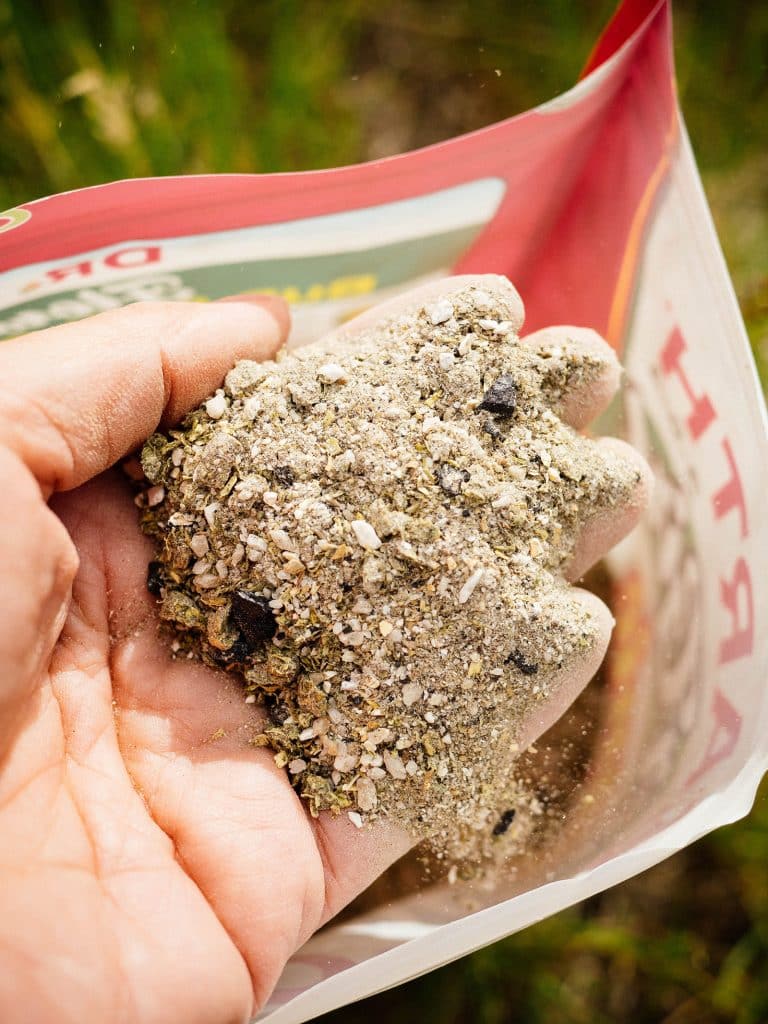
How (Not) to Fertilize Your Plants This Summer
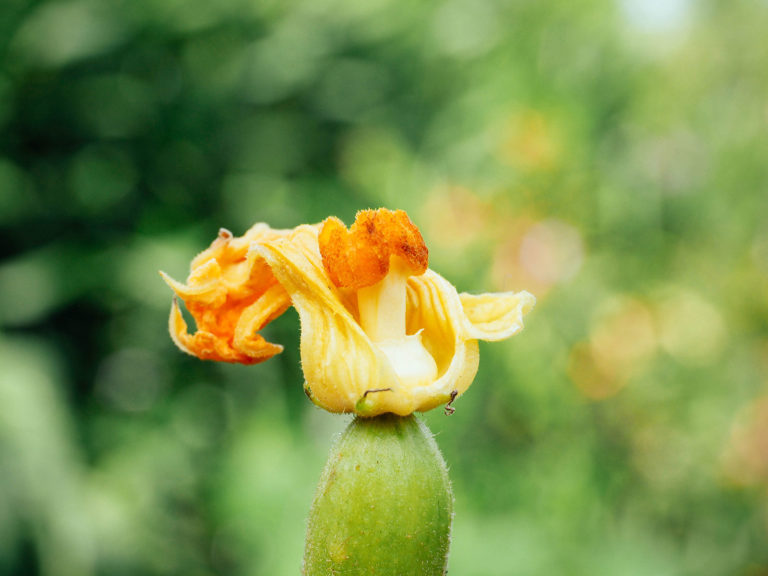
How to Pollinate Squash by Hand (and Why Your Plants Have Lots of Flowers but No Fruits)
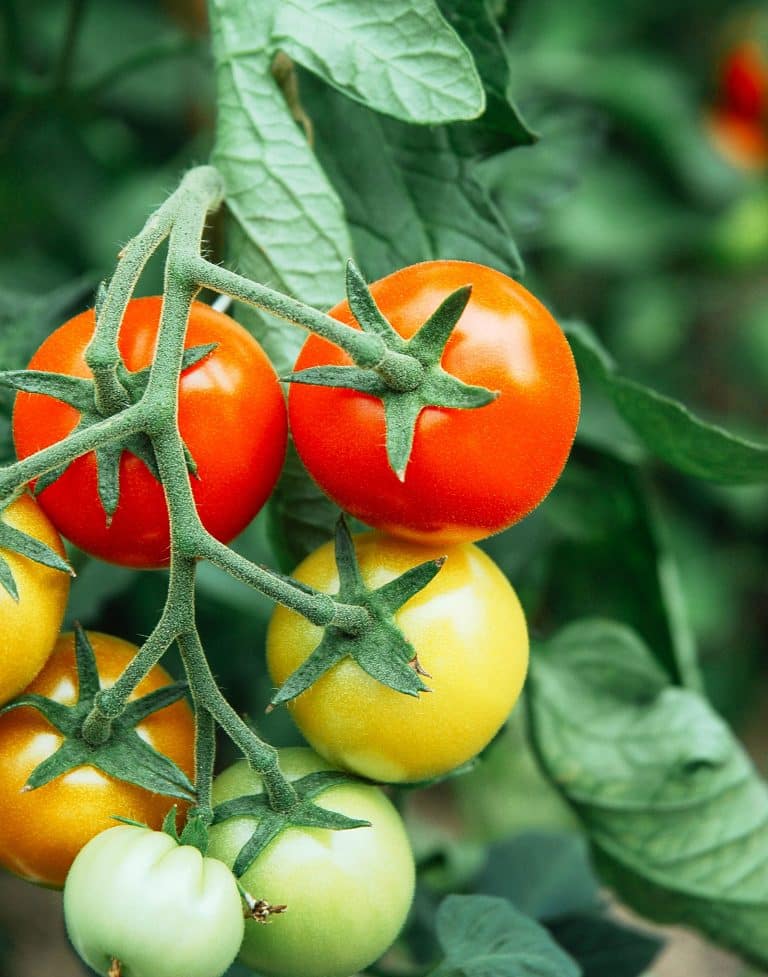
The Best Time to Pick Tomatoes for Peak Quality (It’s Not What You Think!)

What You Should Know Before Buying Land (My Real-Life Tips)

Construction Loans: What I Wish I’d Known As a First-Time Borrower

Dark Room? 9 Actually Low-Light Plants That Don’t Need a Lot of Sun

Getting Rid of Fungus Gnats: 11 Remedies That Really Work
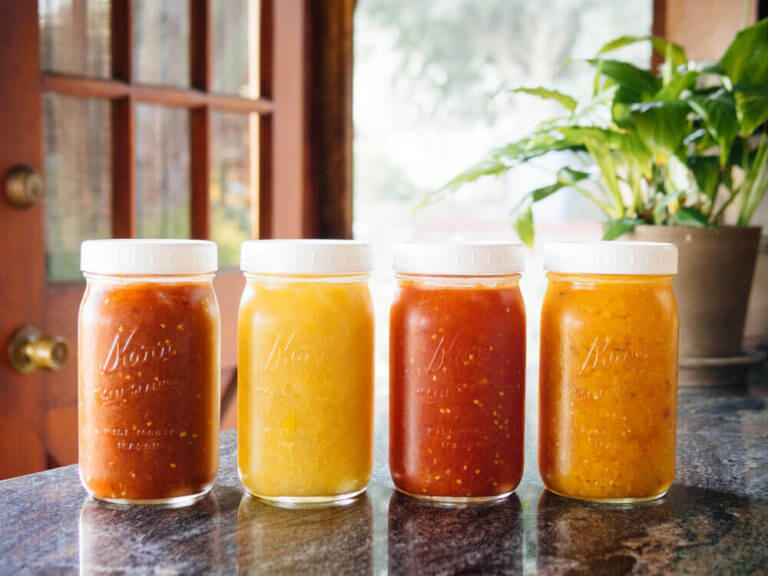
Easy Peasy Homemade Tomato Sauce (No Peeling Required)
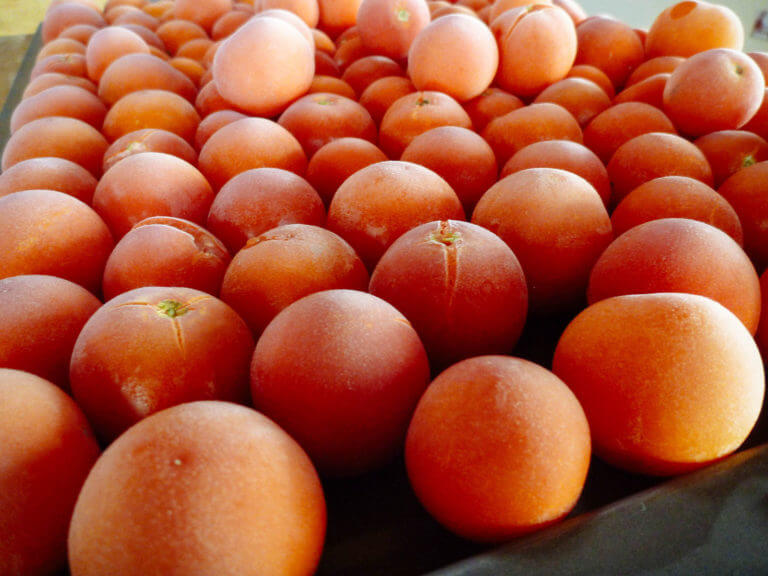
This Is the Best Way to Freeze Fresh Tomatoes

Fiery Fermented Hot Sauce: 3 Simple Variations
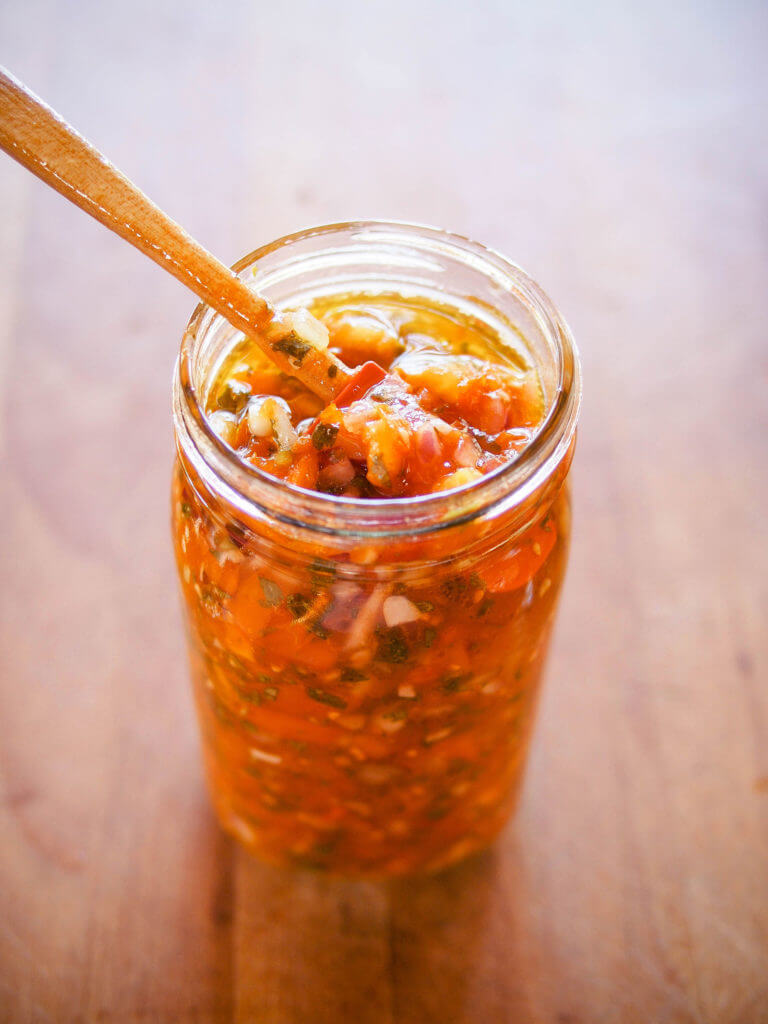
Spicy Fermented Salsa: Take Tomatoes to the Next Level
Want to level up your garden this year.
Sign up for my free, never-boring newsletter and every week you’ll get the game-changing emails you wish you’d gotten sooner.
- About Linda Ly
- What’s In My Garden
- Lazy Gardening Academy
- Sponsorships
- Site Policies

Back to the top
Disclosure: Garden Betty independently selects products to feature on this site. I may receive a commission when you buy something through one of my links. As an Amazon Associate, I earn from qualifying purchases.
© 2024 Garden Betty. All Rights Reserved.


- Indoor Gardening
- Houseplants
- Hydroponics
- Houseplants Made Easy Book

How To Care For A Wandering Jew Plant (Your Complete Guide)
When it comes to houseplants able to brighten up indoor spaces, it doesn’t get much more colorful than the variegated foliage of a Wandering Jew plant ( Tradescantia zebrina ). With their hardy nature and ease of care, they are a perfect choice for those feeling they kill everything they bring indoors. We’ve listed a quick summary of their care below.
How To Care For A Wandering Jew Plant: Grow your Wandering Jew in well-drained soil, kept moist but not soggy through regular watering. Create humidity, keep indoor temperatures between 50°F (10°C) to 85°F (29°C) and fertilize monthly.
Continue reading because we’ve taken all the guesswork out of caring for your Wandering Jew and keeping it healthy and happy for years to come.
How To Care For A Wandering Jew Plant
Wandering Jew plants belong in the Commelinaceae family, which includes around 652 different species. The family is made up of herbs, climbers and several epiphytes, with some used as outdoor and indoor ornamentals like Wandering Jew.
There are three different plants commonly known as Wandering Jews; Tradescantia fluminensis , Tradescantia pallida , and Tradescantia zebrina. Of the three, Tradescantia zebrina is the most common one grown and has the most eye-catching and colorful foliage. All three have the same requirements for care and good growth.
Native to Mexico and Guatemala, Wandering Jew is classified as a tender evergreen perennial that performs well planted outdoors in frost-free regions. Those living in cooler environments can easily grow it as an indoor plant planted either in containers or in hanging baskets. Outdoors it’s typically used as a quick-growing groundcover.
Although a common name shared with several very different plants, Wandering Jew is often called Inch Plant , due to the leaf margins being spaced about an inch apart. You may also find Wandering Jew listed as Zebrina Pendula , but is synonymous with Tradescantia zebrina and is the same plant.

When it comes to Wandering Jew plants, it’s all about the attention-grabbing foliage. The succulent stems give way to leaves that are a deep purple on their undersides with the upper portion striped in silvery-gray and greenish-blue. The oval leaves grow to about 2.5 inches long and the stems grow about 2 feet long. It makes a beautiful plant used in hanging baskets, with the long stems cascading over the side.
Even grown indoors, Wandering Jews have a fast rate of growth and before you know it, the plants will be spilling over your container’s or hanging basket’s sides. Whereas some indoor plants seem to take forever to fill out, this isn’t a problem with properly cared for Wandering Jew plants.
There are several other cultivars (varieties) of Wandering Jew, which include:
- ‘Purpusii’ has unstriped, hairy foliage that is either solid red or reddish-green.
- ‘Quadricolor’ produces metallic-green foliage striped in red, white and green.
Wandering Jew plants are the ideal candidates for beginner houseplant gardeners due to their hardiness and robust growth. Below we’ve outlined all the basics of their proper care, as well as identifying and preventing any potential problems so you can enjoy your Wandering Jew for years to come. The best indoor plants are those that are happy and healthy.

Soil Conditions For Wandering Jew Plants
Wandering Jew plants tolerate growing in a wide range of soils provided they drain well. Although they do tolerate and prefer moist conditions, the soil must drain properly to prevent root and stem rot from occurring. Therefore, it is necessary to use a lighter weight soil mixture in your pots rather than heavier soils that don’t provide proper drainage.
Straight potting soils are usually too heavy, retain too much moisture and have a tendency to leave the soil soggy. You can use a heavier potting soil in your soil mixture, just be sure to incorporate a lighter soil mix to provide the Wandering Jew the drainage required for healthy growth.
Commercial potting mixes work well and many have a slow-release fertilizer mixed in, which cuts down on the need for frequent feedings. The slow-release blends usually continue to fertilize the Wandering Jew for about three months.
You can also make your own soil by mixing several ingredients together such as:
- Using equal parts of compost and a potting mix.
- Mixing equal portions of compost, peat and potting soil or a potting mix.
- Using equal portions of a course sand, compost and potting soil or a potting mix.
Whatever soil you choose to use, just make sure it drains well and contains a bit of fertility for the best performance of your Wandering Jew plants.
Preferred Light Conditions
Although Wandering Jew plants tolerate lower light conditions than many houseplants, to help retain those striking colors the plant is known for, place the container in a location indoors receiving filtered sunlight. If your plant starts losing some of the color in the foliage, move it to a location that receives a bit more light.
In addition, if the lower portion of the stems start suffering leaf drop, the Wandering Jew isn’t get enough light and needs to be relocated to a brighter area inside the home.
Once the warm weather of spring arrives and if you’d like to give your Wandering Jew a bit of a break from its indoor location, place it in an outdoor spot that receives partial sun to partial shade. Moving it to an outdoor location with too much sun may leave the foliage sunburned.
Indoor Temperature Requirements
In the Wandering Jew’s native environment, temperatures are consistently warm without the threat of frosts or freezes. Generally, if the indoor temperatures inside your home are comfortable for you, they will also be comfortable for your Wandering Jew plant.
Indoor temperatures between 50°F (10°C) to 85°F (29°C) are a good range for your Wandering Jew plants. Plants grown in this temperature range produce the healthiest growth.
If you gave your plants a break from their indoor location, just make sure to bring them back indoors before the cold weather of winter strikes.
Water Requirements
Wandering Jews prefer soils that are regularly kept moist, not soggy, compared to many indoor houseplants. However, this doesn’t mean the soil should be kept so wet they never begin to dry out. Keeping the soil too wet for too long promotes rot to set in and you may end up killing your Wandering Jew plants. Your Wandering Jew is more likely to forgive you if you forget to water over watering too much and too often.
A good rule to follow is if the soil starts to feel like it’s about to become very dry, apply water. It’s easy to know exactly when to water by:
- Sticking your finger into the soil and if the top inch is starting to feel dry, water until it runs from the container’s bottom drain holes.
During the warm growing season of spring through summer, you can probably expect to water once each week. However, during winter when the Wandering Jew goes into dormancy (its growth slows), you will probably only need to water about every other week.

Humidity Requirements
Compared to many tropical plants grown indoors, Wandering Jew plants aren’t quite as fussy about humid conditions , but still need some humidity for the best growth and performance. Don’t let the thought of creating a humid environment stress you out because replicating humidity for your indoor plants is relatively easy and basic.
- Fill a spray bottle with room temperature water and mist the Wandering Jew several times each week.
- If you’re growing the Wandering Jew in a container and not in a hanging basket, you can set the pot on a tray of pebbles. As you water, the water seeps from the bottom drain holes onto the tray of pebbles and as it evaporates, it creates a humid environment around the plant.
- If your bathroom gets the appropriate amount of light for the Wandering Jew, you can allow it to grow there. Due to the regular use of water in a bathroom, moisture is created, creating the humidity the Wandering Jew requires.
Fertilizer Needs
Unless the soil mixture contains a slow-release fertilizer blend, which feeds the Wandering Jew for about three months, fertilizing monthly is sufficient for proper growth. You have several choices when it comes to fertilizer you can use for your Wandering Jew plant.
- Use a houseplant fertilizer applied at half-strength, applied when you do your regular watering.
- Use an all-purpose, water-soluble blend for outdoor and indoor plants, applied at half-strength and used during your regular watering schedule.
- If your soil mixture didn’t contain a slow-release fertilizer or it’s been about three months, if one was contained in the soil, you can reapply slow-release fertilizer granules sprinkled over the top of the soil. Follow the package directions on amounts.
When it comes to the appropriate time of year to fertilize the Wandering Jew, only fertilize while it’s actively growing, which is spring throughout summer. In winter, the plant goes through a dormant stage and all growth slows, so there is no need to apply fertilizer. Wait until spring arrives before you resume fertilizing the plant.
The one thing you will need to pay attention to when it comes to fertilizing is the buildup of salts in the soil, which can result in foliage burns. Wandering Jew plants have a low tolerance to salty soils. Preventing any salt buildup is relatively simple:
- If the plant isn’t too big, you can take the entire pot to your sink or bathtub and allow water to run slowly through the soil for about five minutes, flushing out any salts.
- If the plant is too big for indoor flushing, take it outside and allow water from the hose to run slowly through the soil for about five minutes. Allow the water to drain and then bring the plant back indoors.
Pruning Requirements
The pruning needs of Wandering Jew plants are low. If you want to control the size of the plant and promote bushier growth, you can pinch off the tips of the stems. To keep the plant always looking its best, you can trim off any broken, dead or damaged stems and leaves throughout the year.
When using pruning tools to trim your Wandering Jew always make sure they are clean so you don’t transfer any diseases or pests to your plant. This is as easy as wiping off the blades with alcohol.
Some people experience skin irritations when handling the cuttings due to the sap , so if you are unsure if you are one of these unlucky gardeners, it might be best to wear gardening gloves when pruning or handling Wandering Jew cuttings.
Potting Needs
If you purchased your Wandering Jew already potted in a hanging basket or 1-gallon container, it should thrive as is for a year or more before it requires repotting. However, if you received rooted cuttings in smaller containers like 4- to 6-inch pots, you most likely need to repot them into something a bit larger so they can grow properly.
This also cuts down on the need for repotting in a month or two as the Wandering Jew begins to outgrow its present pot.
When it comes to the pot’s material, any type works quite well for growing this plant from clay to plastic. However, if you grow your Wandering Jew in a pot made of a porous material like terra cotta, the soil is going to dry quicker than if it was growing in a plastic pot. This means you will need to water more frequently.
Once your Wandering Jew starts getting too big for its present container, it’s time to repot it into one that is around 1- to 2-inches larger. Although the plant likes a moist soil, make sure the pot has bottom drainage to prevent the possibility of rot due to conditions that are too wet.
If you like, you can dress the container up by placing the draining one inside a decorative pot without bottom drain holes, but be sure to empty out any additional water once the inner pot thoroughly drains.
I think a decorative outer pot can add so much to the beauty of your houseplants, so I do this with almost all of my houseplants. Read this article which discusses my favorite decorative planters if you need some inspiration.
Potting and repotting your Wandering Jew is basic:
- Gently remove the Wandering Jew from its present container, being careful not to break the succulent stems.
- Fill the new container that drains about a quarter of the way full with a fertile, well-drained potting mix.
- Check the Wandering Jew’s root system and if it’s growing bunched together and filled the previous pot, gently tease the roots apart with your hands.
- Place the Wandering Jew into the new container and finish filling it with soil.
- Water the Wandering Jew until it runs from the bottom drain holes and place in a bright location indoors.

Propagating New Plants
When it comes to propagating new plants, Wandering Jew is about as easy as it gets. Even if you have never done this before you should have success starting its cuttings. When you trim to control its size, don’t throw those cuttings away but use them to start additional plants.
You have two choices when it comes to rooting your cuttings and both are easy. The first thing you will want to do is obtain your cuttings. Trim off a 4- to 6-inch cutting from the mother plant and you’re ready to start rooting.
Rooting in Soil
- Fill a 6-inch to 1-gallon container that drains with a rich, well-drained potting mix. Water the soil to settle it.
- Make about a 2-inch indentation in the soil where you want to place the Wandering Jew cutting.
- Remove the bottom leaves from the cutting where you will be inserting it into the soil. You can do this by pinching them off with your fingers.
- Place the cutting into the indentation and firm the soil up around it with your fingers.
- Water the soil again and place the cutting in the same light conditions where the mother plant was thriving. Keep the soil moist but not soggy.
Roots should form in about four weeks and after about eight weeks, the Wandering Jew cuttings should form a new root system.
Rooting in Water
- Fill a glass jar or plastic container with about 3-inches of room temperature water.
- Pinch off any leaves from the section of the Wandering Jew cutting that will be submerged in the water.
- Place the cutting in the water and situate the container in a bright indoor location.
- Change the water in the container about every other week, or when cloudy.
You should start seeing new roots form on the cuttings in several weeks. Once the roots are several inches long, you can repot the cuttings into a draining container filled with fertile, well-drained soil.
Disease Problems
Wandering Jew plants grown indoors are hardy and don’t have major diseases that plague them. However, rot is their biggest enemy and caused by soils that are too heavy and do not drain properly, retaining too much water. Overwatering and planting in pots that don’t drain are other causes of rot problems.
When rot rears its ugly head you’ll notice the bottom stems, as well as the foliage turning black, becoming mushy and the entire plant collapses. If this happens and seems to start affecting the entire Wandering Jew plant, you can trim off healthy, unaffected sections of the stems and repot into fresh, clean soil. Since there is no saving the rot-infected sections, you will have no choice but to discard those portions of the plant.
Steps for preventing problems with rot include:
- Using lightweight potting mixes that drain well and aren’t too heavy, which leads to the soil remaining too wet for too long. Some types of potting soils have a tendency to be heavy and need mixing with a potting mix, compost, coarse sand or peat.
- Don’t overwater your Wandering Jew. Although they prefer growing in moist soils, this doesn’t mean constantly soggy soil. Stick your finger into the soil and if the top inch is starting to become dry, apply water until it runs from the bottom of the pot.
- Make sure the pot you are growing your Wandering Jew in has bottom drainage. If you have placed the pot inside a decorative one that doesn’t drain, make sure to empty all the water from it after you have watered.
Pest Problems
Although indoor Wandering Jew plants are not big candidates for problems with pests, several can cause an infestation and problems. As with any pest problem indoors or outside in the garden, quick control is always the best option to keep your plants healthy. It also assures the pests do not migrate to your other plants causing even bigger problems and headaches.
The pests most likely to infest your indoor Wandering Jew plants are:
- Aphids: Aphids come in a host of different colors and are tiny, pear-shaped, sap-sucking insects that usually congregate in large masses along the Wandering Jew’s stems. In large infestations, they can kill the plant or severely weaken it. If the infestation is small, you can wipe the pests off the stems with a moist cloth. However, if the infestation is large, you will probably have to spray the plant with an insecticidal soap or Neem, reapplying as suggested on the package.
- Spider Mites: Spider mites are another sap-sucking pest that if left unchecked can quickly kill or weaken the Wandering Jew. It is easy to tell if you have a spider mite problem as these tiny, white pests spin fine webbing that covers the plant. Spider mites can be the bane of houseplants so quick control is necessary. Use an insecticidal soap or Neem and spray the entire plant, reapplying as suggested on the product label.
- Whiteflies: Whiteflies are other sap-sucking pests that can quickly kill or weaken your Wandering Jew if not quickly controlled. They are another easily identifiable pest, as just touching the plant sends the tiny whiteflies from the plant’s foliage and into the air, hovering right above it. Control the problem with an insecticidal soap or Neem, spraying the entire plant and reapplying as suggested on the product’s label.
- Mealybugs: Sap-sucking mealybugs show up on the Wandering Jew as cottony masses covering the stems and crotches of the foliage. Control the problem by spraying the entire plant with insecticidal soap or Neem, reapplying as suggested on the product’s label. If the infestation is small, you can also wipe them from the stems and leaves with a damp cloth.

Is Wandering Jew A Perennial?
Wandering Jew plants are considered a tender, evergreen perennial. Unlike annuals, and if grown in preferred conditions with proper care, Wandering Jews should live and keep on growing for quite a few years, both indoors and outside.
Why Are My Wandering Jew Plant’s Leaves Losing Their Color?
If your Wandering Jew is growing in light conditions that are too low, the leaves will start to lose their color and become duller. When grown indoors and to keep the bright color on the foliage, make sure the Wandering Jew is growing in a location receiving bright light.
Why Are My Wandering Jew’s Leaves Dropping?
Wandering Jew plants grown in light conditions that are too low will start dropping leaves at the base of their stems. Solve the problem by moving the plant to an indoor location that is brighter. For the best leaf color and growth, they prefer an indoor location receiving bright light.
Why Are My Wandering Jew Cuttings Rotting In Soil?
If your Wandering Jew cuttings are rotting in soil it could be one of two things causing the problem. The soil you are growing the cuttings in may be infected with a fungus that is infecting them with rot.
You can solve the problem by planting the cutting in a sterile, well-drained potting mix. Another cause might be the soil is remaining too soggy and the container doesn’t drain.
Make sure you are using a soil that drains well and doesn’t remain soggy, do not overwater and use a container with bottom drainage. Water the cuttings when to top inch of soil feels dry to the touch.
Can I Root Wandering Jew Cuttings In Water?
Wandering Jew cuttings root quite well in water. Fill a container with several inches of water, remove any leaves that would be submerged and stick the cut end into the water.
Fill the container with fresh, clean water about every other week. You should start seeing root form on the cuttings in several weeks. Once the roots get several inches in length, you can repot the cuttings in a draining container with rich, well-drained soil.
Are Wandering Jew Plants Toxic?
When it comes to humans, Wandering Jew’s sap can cause skin irritation in humans that are allergic to it. Therefore, it’s best to wear gardening gloves when handling or pruning the plant.
The plant is listed as toxic to dogs and cats, due to its tendency to cause skin allergies and dermatitis. To keep your pets and children safe, make sure you situate your indoor Wandering Jew out of the reach of both.
If you’d like some indoor plants that are non-toxic, check out this article which discusses my favorite non-toxic houseplants.
Do Wandering Jew Plants Produce Blooms?
When grown outdoors, Wandering Jews produce small, three-petaled, lavender flowers, but the plant rarely ever blooms grown indoors as a houseplant.
Can I Grow Wandering Jew Outdoors?
Wandering Jew plants grow as perennials planted outdoors in frost-free climates, however, those with cooler weather can plant outdoors and treat it as an annual.
What’s The Growth Rate For Wandering Jew Plants?
When grown in proper conditions with proper care, Wandering Jew plants are considered fast growers.
Many thanks for reading my guide to Wandering Jew care. This really is a great indoor plant for your home. Beautiful and easy to care for, its hard to go wrong.
If you want more help with looking after your indoor plants, check out the rest of my articles , and head over to my resources section , where I have some great recommended resources, books and equipment to help you grow healthier, more beautiful plants.
Skip to content
- Helping Shelters, People and Pets
- Investigations and Rescue
- Animal Care and Recovery
- Improving Laws for Animals
- The Puppy Industry
- Protecting Farm Animals
- Advancing Horse Welfare
- ASPCA Grants
- New York City
- Los Angeles
- Asheville, NC
- Oklahoma City, OK
- Ways to Give
- Get Involved
- Find More Humane Food
- Adopt a Pet
- Advocate for Animals
- Receive Text Updates
Primary Nav Menu
Search form, toxic and non-toxic plant list - cats, plants toxic to cats, plants non-toxic to cats.
Home / Blog / Are Wandering Jew Plants Toxic to Dogs?

Pet Friendly Plants
Are wandering jew plants toxic to dogs.
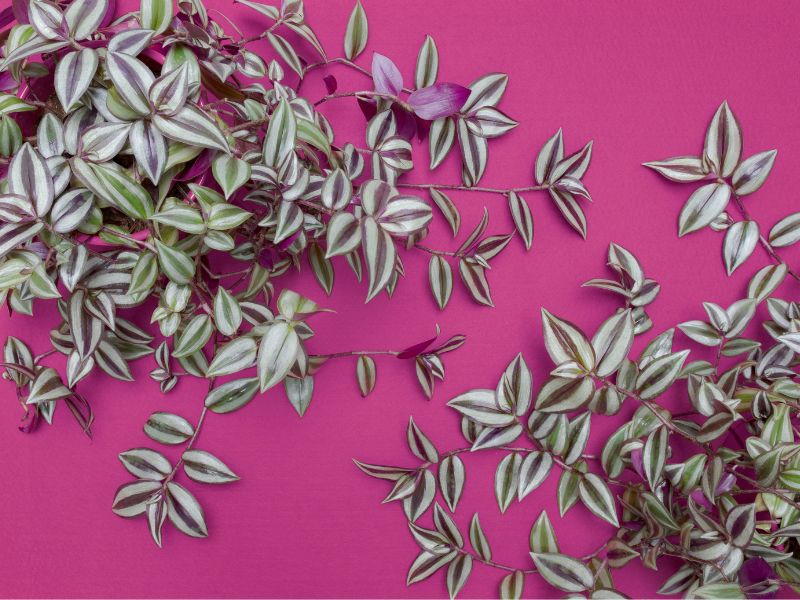
Yes, wandering Jew plants are mildly poisonous to dogs.
Wandering Jew, or Tradescantia, is a type of creeping plant that belongs to the Commelinaceae family. With about 85 climbing and trailing species, the wandering Jew is typically grown as indoor houseplants or as garden plants used for ground cover. Their leaves are thin, long, and pointed at the ends, and sometimes have attractive patterns . Aside from Tradescantia, the plant is called dayflower, inchplant, and spiderwort.
The American Society for the Prevention of Cruelty to Animals (ASPCA) states that this fast-growing plant is toxic to dogs as well as cats . In addition, Totally Vets shares that pets that walk over this plant may experience allergic dermatitis. When this happens, your dog may get little bumps, dry skin, hair loss, and redness in his abdomen, groin, and other affected areas.
What to do if your dog accidentally comes into contact with, chews, or eats wandering Jew plants: Contact your veterinarian to request for topical medication that will soothe his skin. Moreover, if he ate a portion of the plant, inform your vet. Monitor him for possible poisoning, which can range from digestive to respiratory complications.
Common poisoning signs include diarrhea, vomiting, drooling, pale gums, agitation, and nausea. Tremors, convulsions, unsteadiness on feet, abnormal heart rate, and difficulty in breathing may also be seen. If needed, bring a portion of the wandering Jew plant to the vet clinic for a more comprehensive assessment.
In summary: Pet owners should not grow Wandering Jew plants. Dogs, cats, and even humans may experience allergic dermatitis every time they come into contact with the plant.
Before you consider receiving a bouquet of flowers or buying a new houseplant, check out these lists by ASPCA , PetMD , and Pet Poison Helpline . They’ll help you determine which ones are safe and toxic for dogs.
References:
Tradescantia – Wikipedia
Inch Plant | ASPCA
Tradescantia zebrina – Wikipedia
Wandering Jew – Totally Vets
Dog poisoning: Signs of poisoning in dogs and what you need to do
Skin Irritation In Dogs: Causes, Symptoms, & Treatment
Poisonous Plants for Dogs
Leave a comment
Your email address will not be published. All fields are required.
Check out related posts
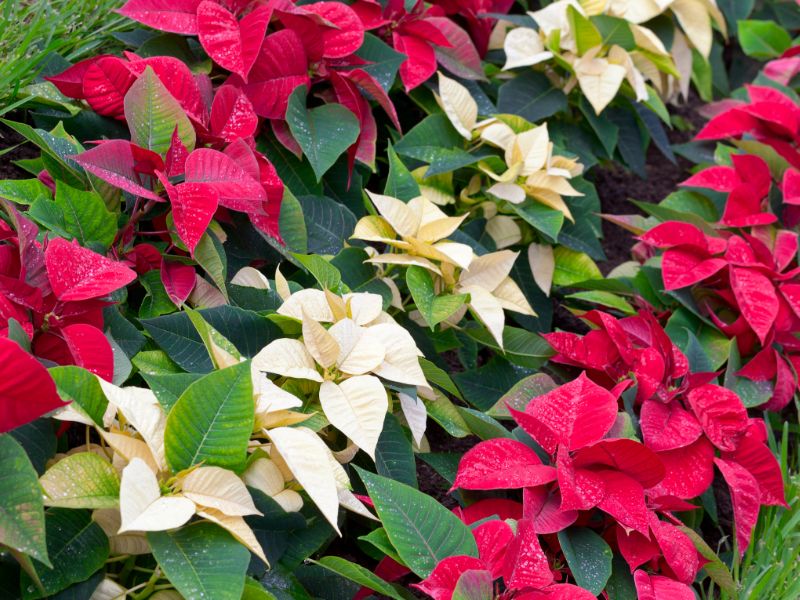
Are Poinsettia Plants Toxic to Cats?
Yes, poinsettia plants are mildly toxic to cats. Poinsettias are flowering plants that are popular during the Christmas season. They belong to the Euphorbia genus, and are native to Central America and Mexico. Poinsettias go by many names. This includes the crown of the Andes, Easter flower, flame leaf flower, flower of Christmas eve, flower… Continue reading Are Poinsettia Plants Toxic to Cats?
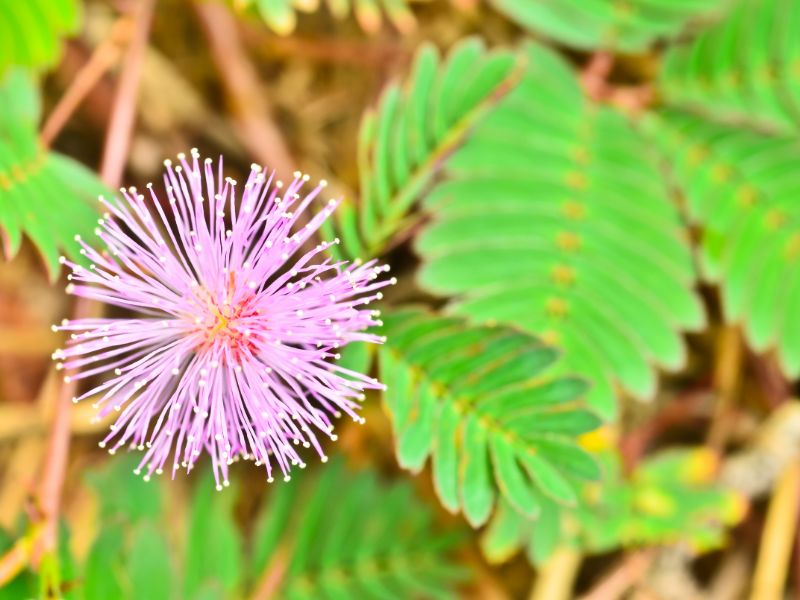
Are Sensitive Plants Toxic to Cats?
Yes, sensitive plants are toxic to cats. Mimosa pudica is a plant that belongs to the family Fabaceae. It has other monikers such as sensitive plant, touch-me-not, humble plant, shameplant, and sleepy plant. This is because of its foliage that folds or shrinks when it is touched, shaken, or even blown on. The leaves also… Continue reading Are Sensitive Plants Toxic to Cats?
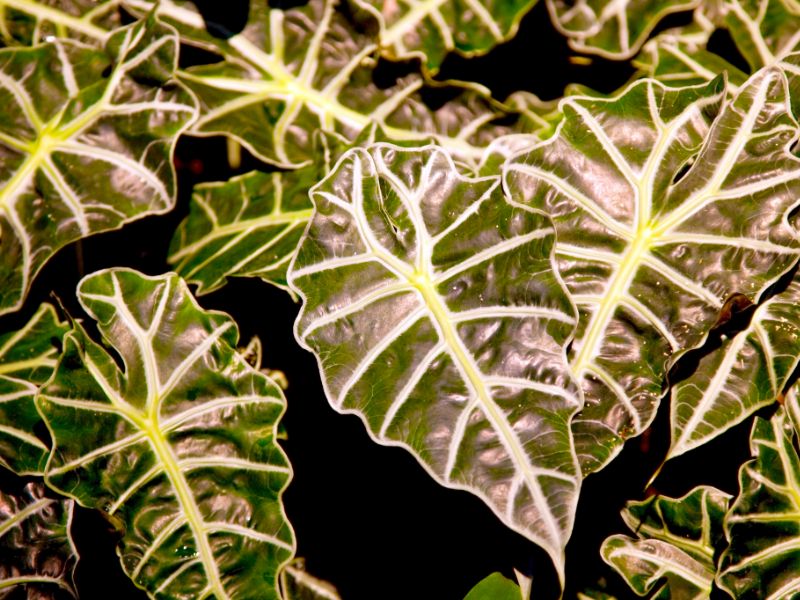
Are Alocasia Plants Toxic to Cats?
Yes, alocasia plants are toxic to cats. Alocasia is a genus of plants native to eastern Australia and the tropical and subtropical regions of Asia. The genus is recognisable due to its broad, heart-shaped or arrowhead-shaped leaves. Because of its foliage, people also call it elephant’s ear, giant elephant’s ear, and Amazon elephant’s ear. Both… Continue reading Are Alocasia Plants Toxic to Cats?

Subscribe to our newsletter
A weekly digest of anything and everything animal welfare. No spam, we promise.
- Cat Behavior
- Health & Care
- Vet Approved
What Houseplants Are Poisonous to Cats? 15 Toxic Types
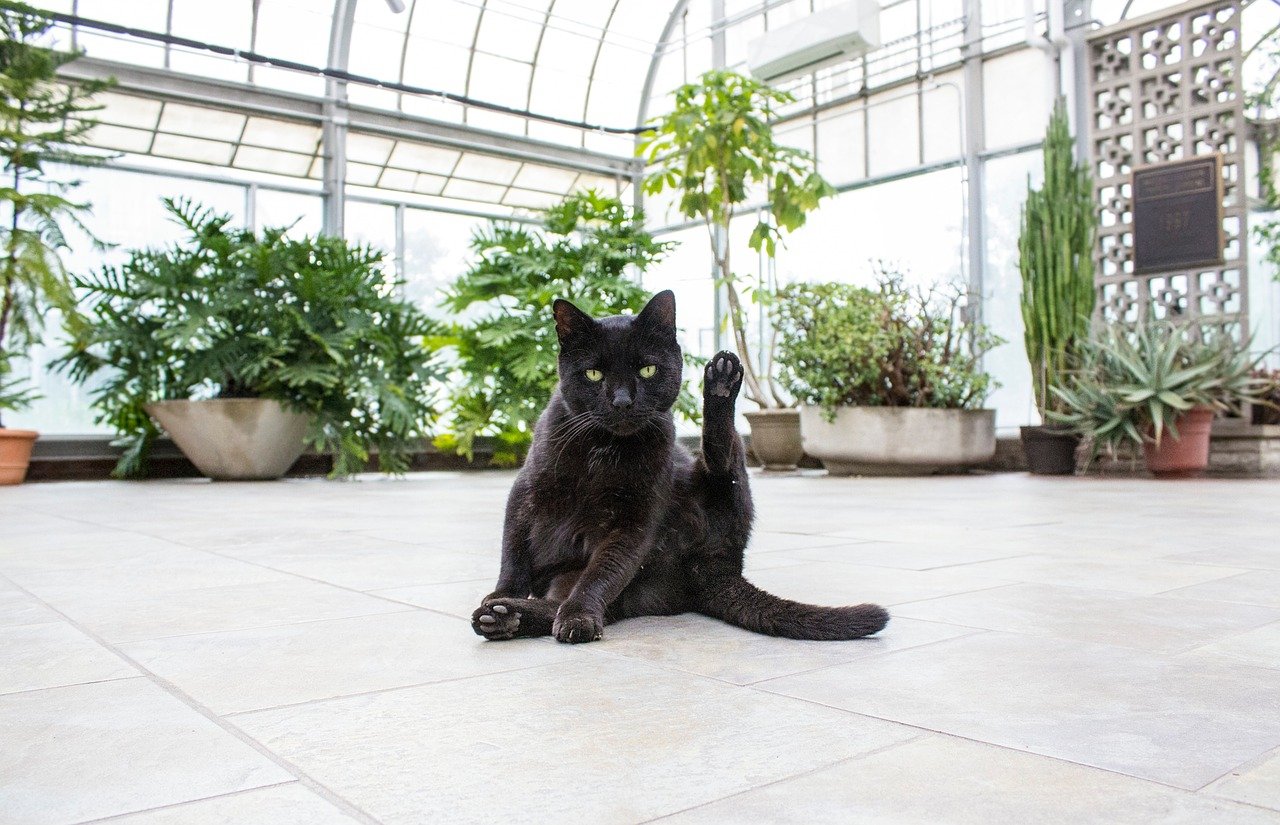
Image Credit: StockSnap, Pixabay
Last Updated on August 28, 2024 by Catster Editorial Team
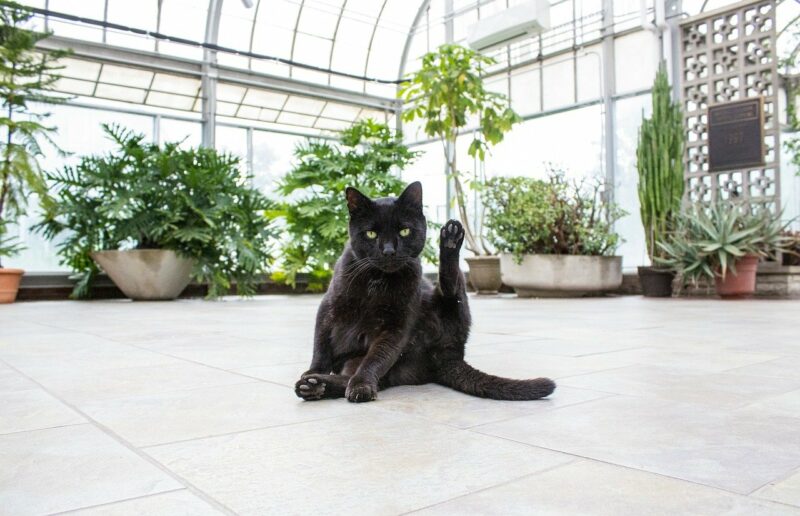
VET APPROVED
REVIEWED & FACT-CHECKED BY
Dr. Amanda Charles
BVSc GPCert (Derm) MRCVS (Veterinarian)
The information is current and up-to-date in accordance with the latest veterinarian research.
Wondering what plant to get that won’t upset your cat? We’ve got you covered. This post lists 15 common houseplants that should be avoided by cat owners—usually. In some cases, cat owners can have a plant that is not necessarily cat-friendly as long as they are kept away from their kitties. In other cases, the plant should not even be near the house.
Let’s take a look and find out which plants are which, shall we?
- The 15 Types of Houseplants That Are Poisonous to Cats
- 1. Spring Bulbs
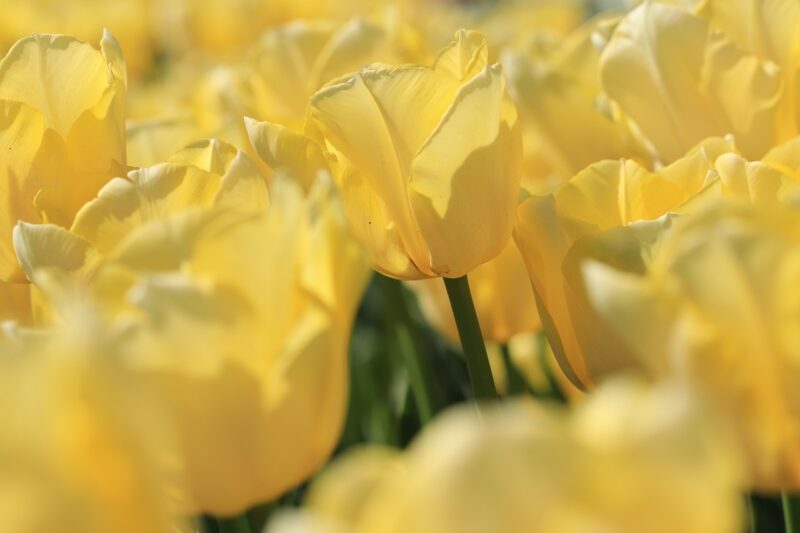
Spring bulbs involve lilies, tulips, irises, daffodils, hyacinths, and more. These flowers often have trumpet-shaped heads and towering stems with stunning colors and stamens. Unfortunately, several of them are lethal to cats. Generally, the most toxic part of the plant to your cat is the bulb, but be aware for some, like daffodils, the flowers can also cause issues like vomiting.
The toxic principles vary from plant to plant, but alkaloids are usually blamed. Indoor cats don’t come across these plants as often as outdoor cats. Still, sometimes you’ll find spring bulbs indoors during special holidays, like Easter.
- 2. Tradescantia zebrina
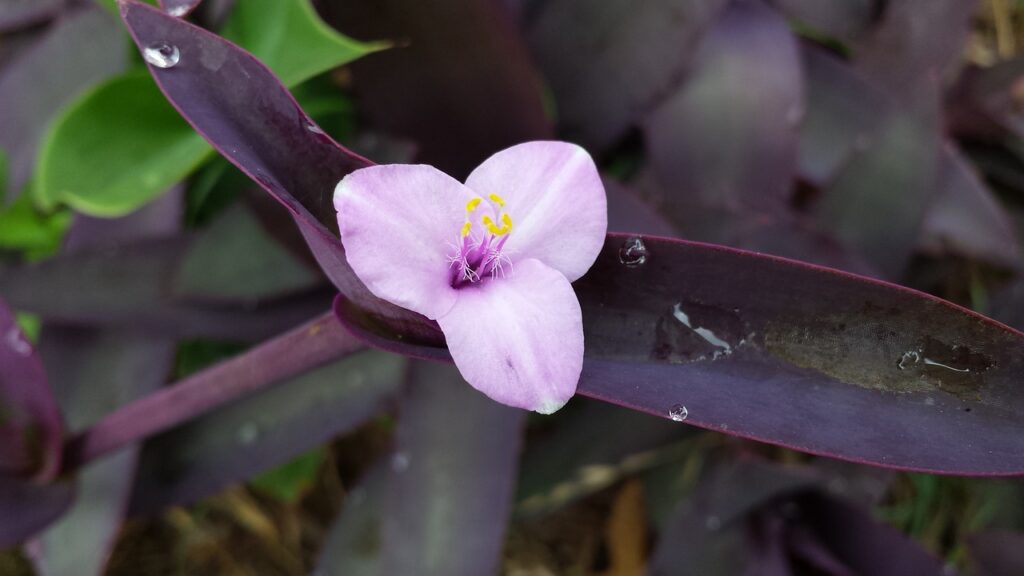
A beloved plant amongst plant lovers, the Tradescantia zebrina isn’t as friendly toward cats as we had hoped. The sweeping leaves and stems contain calcium oxalate crystals that cause discomfort for your cat.
Thankfully, slight dermatitis (skin irritation) is usually the worst that will happen, but gastrointestinal irritation like vomiting and diarrhea can also occur. If you decide to keep this plant in your home then keep it high up or in a room away from where your cat can’t reach it.
- 3. Larkspur
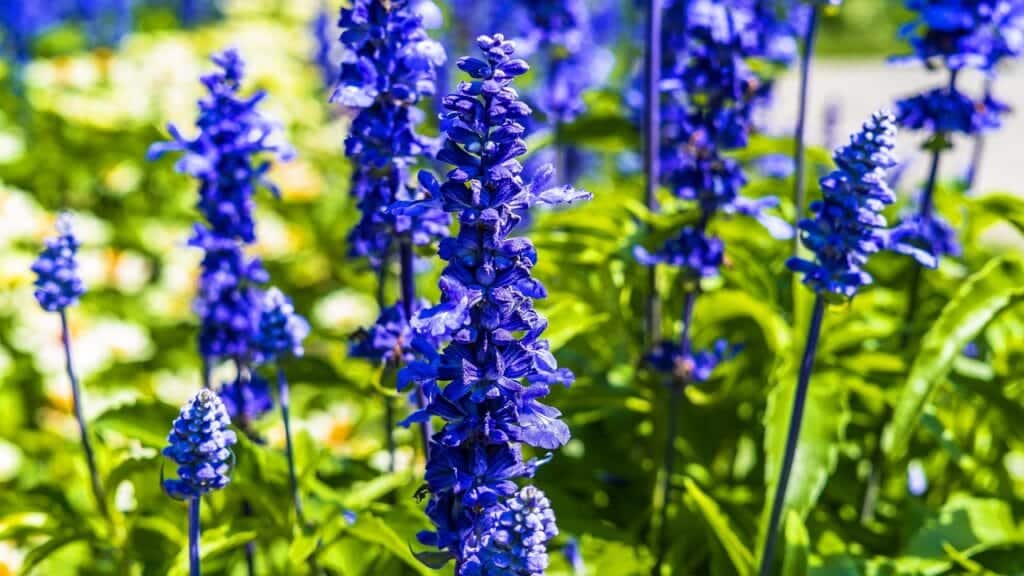
Larkspur, also known as Delphinium, is highly toxic to cats and is best to keep out of the home and garden. Salvia and coneflowers are great alternatives to grow instead and are equally welcoming of birds and bees outside.
Interestingly, Larkspur’s toxicity levels lessen as the plant matures. Even the field conditions can cause the plant’s toxicity to change.
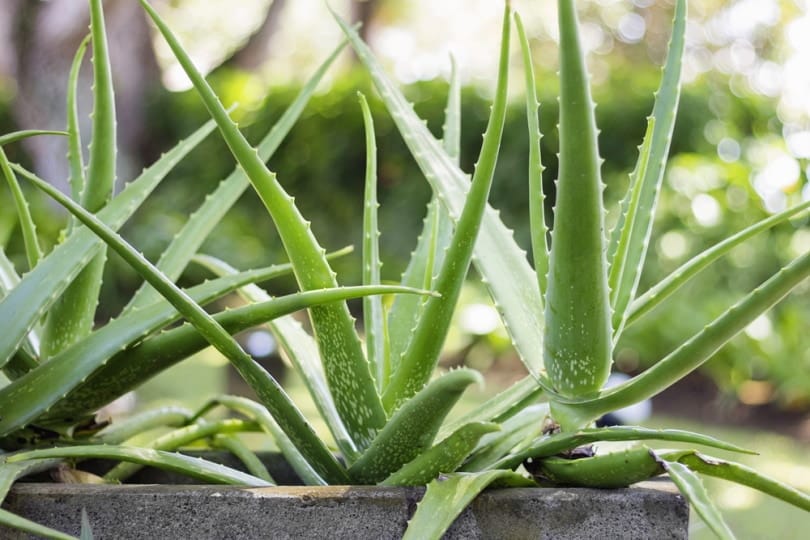
The beloved aloe rests on the shelves of almost every home gardener. Shockingly, parts of this plant can be toxic to cats. The leaves contain saponins and anthraquinones that cause vomiting, lethargy, and diarrhea.
Here’s the good news: only the leaves are considered toxic. So don’t worry, you can keep aloe vera on your shelves. The gel is perfectly safe—a big reason why you see it in several pet shampoo products .
- 5. Sago Palm
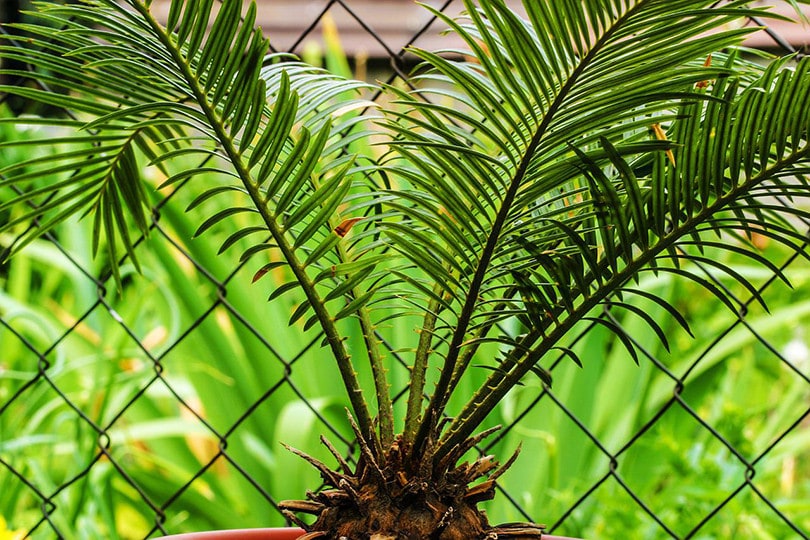
Sago palm is another highly toxic plant where all parts of the plant are deadly to cats. Unfortunately, the seeds are the most poisonous and most accessible part of the plant to eat compared to the prickly parts. In some cases, pets will show clinical signs as soon as 15 minutes after ingestion.
The best way to prevent poisoning is to keep the plant out of your house.
- 6. English Ivy

English ivy is a gorgeous sweeping ivy, adding a nice cottage look to any area, but the foliage is more poisonous than the berries. Cats that eat the leaves could experience vomiting, abdominal pain, hypersalivation, and diarrhea.
You can have the best of both worlds if you suspend English ivy on a shelf where your cat can’t reach the leaves.
- 7. Oleander
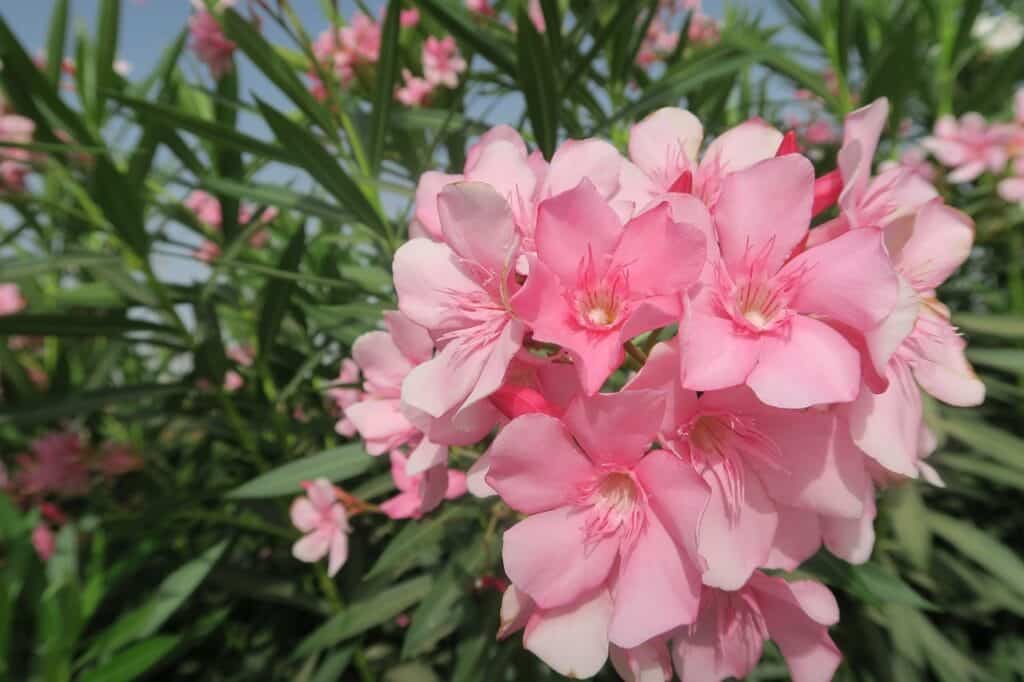
All parts of oleander contain cardiac glycosides that affect the heart and nervous system. Even the water in the vase can cause serious problems if your cat slurps the liquid.
The plant is typically found in warmer climates outside, but many people cut the stems or overwinter the plant indoors.
- 8. Philodendron
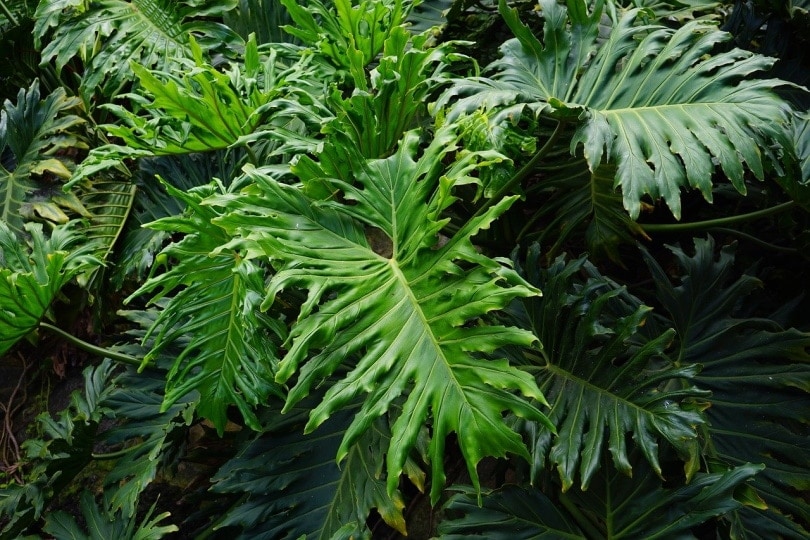
Philodendron has beautiful long stems that unravel toward the ground. If a cat nibbles on the leaves, insoluble calcium oxalates will cause oral irritation, swelling, and difficulty swallowing.
You can keep a Philodendron in the house as long as your cat can’t reach the leaves.
- 9. Fiddle-leaf Fig
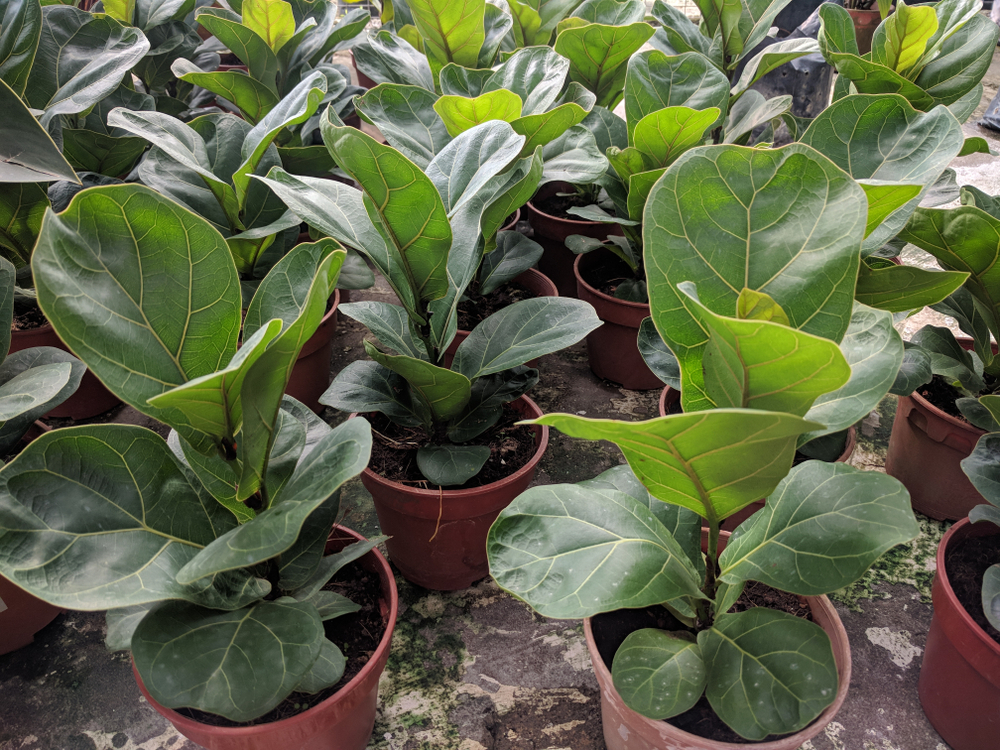
Fiddle-leaf fig is in the same family as the philodendron, so it makes sense why a cat wouldn’t want to nibble on the woody leaves. The insoluble calcium oxalates within the leaves do the same damage as in a philodendron, with the added defense of burning your cat’s mouth, tongue, and lips.
Fiddle-leaf Figs are more challenging to find a space off the floor since they grow upright instead of descending.
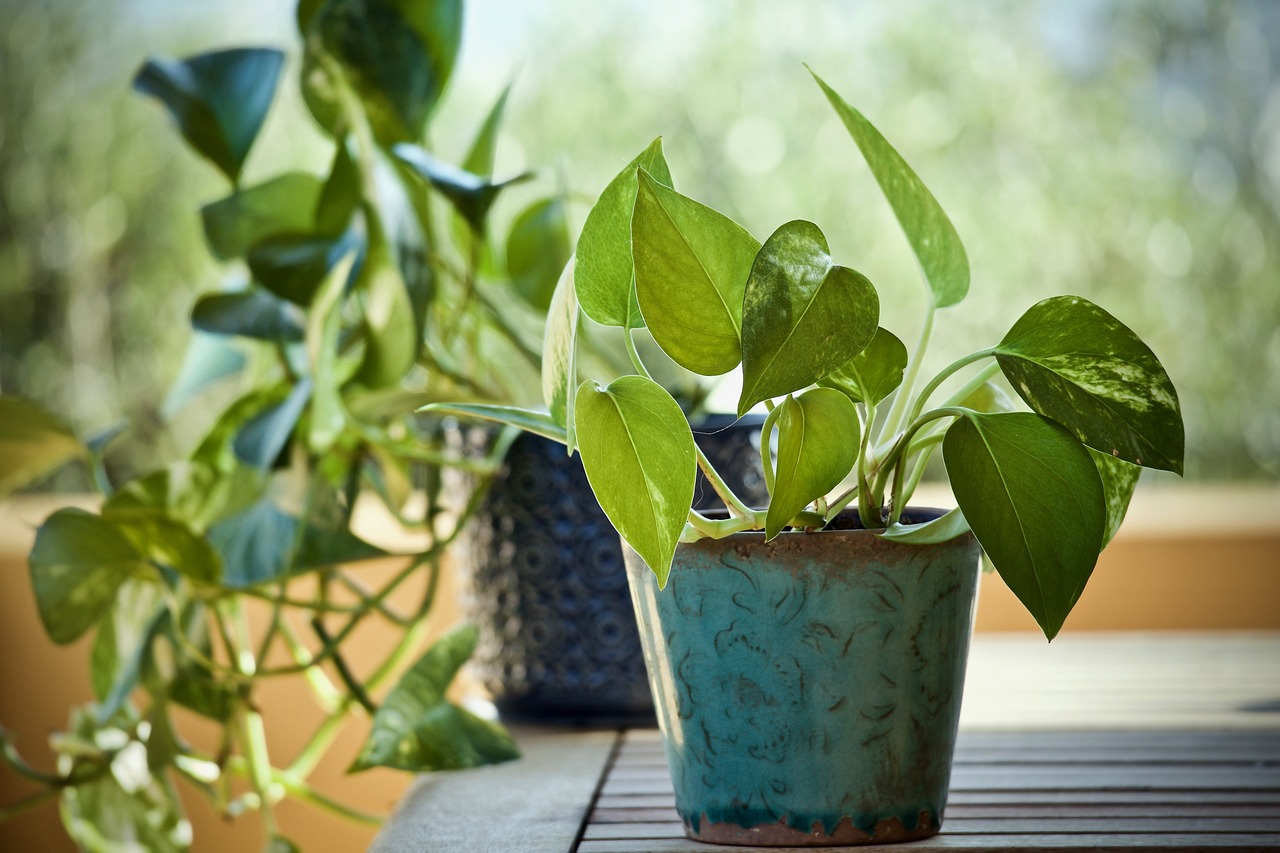
Like the fiddle-leaf fig and philodendron, the pothos is in the Araceae family and will irritate your cat’s mouth to the point of burning it. Thankfully, it is easy to find a place to grow vertically. They hang nicely near windows and only require minimal sunshine to be happy.
- 11. Autumn Crocus
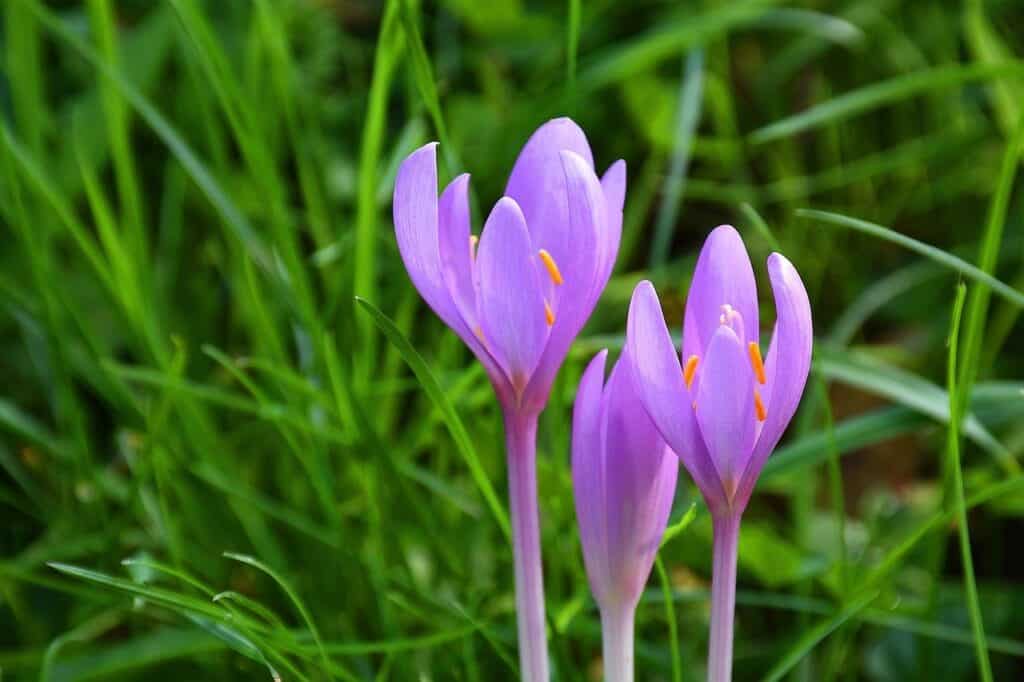
Two types of crocus plants exist: the spring-blooming species and the autumn-blooming species. The spring species belong to the Iridaceae and cause general gastrointestinal upset at worst.
However, the autumn crocus (fall-blooming) belongs to the Liliaceae family, the same family that lilies and tulips belong to. These plants cause severe organ damage and can be lethal, so keep the autumn crocus at the garden store.
- 12. Rhododendrons and Azaleas
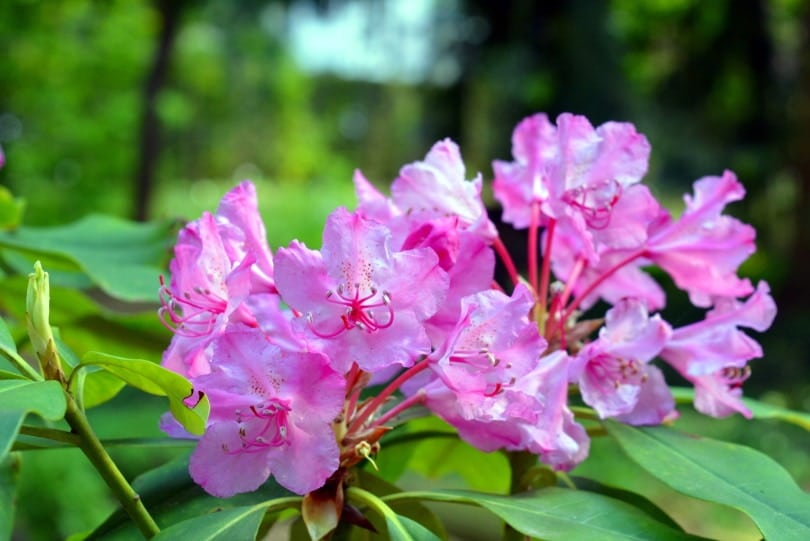
Rhododendrons and azaleas have grayanotoxins that affect the bones and cardiac muscle. All parts of the plant are highly toxic. A cat would only need to consume less than 0.2% of its body weight of the plant for the effects to take place.
Unfortunately, without treatment, eating this plant can be lethal. However, with treatment, the outcome is much better.
- 13. Dracaena
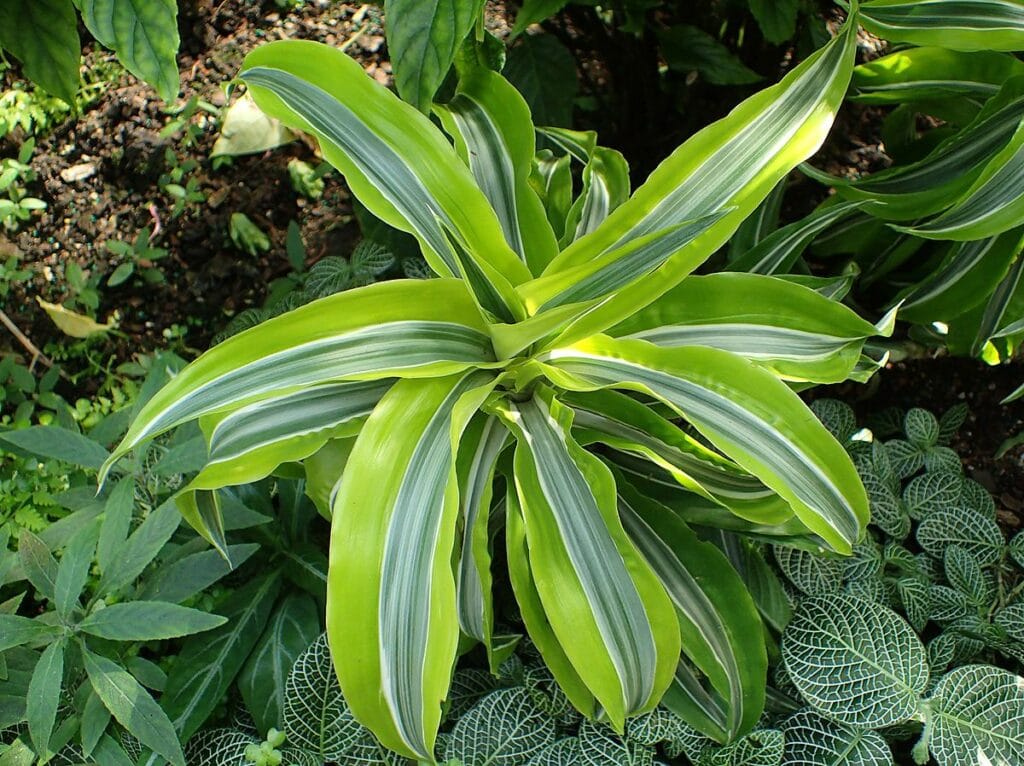
Dracaena is a common palm plant found in many homes and offices. Also known as the West African Soap Tree, the Dracaena’s saponins create foamy soaps that form a natural detergent for clothes and dishes.
However, these saponins are also toxic for cats, causing a wide range of signs like vomiting, depression, anorexia, dilated pupils, hypersalivation, and more. Dracaena isn’t usually lethal but still produces enough damage to warrant an exile.
- 14. Jade Plant
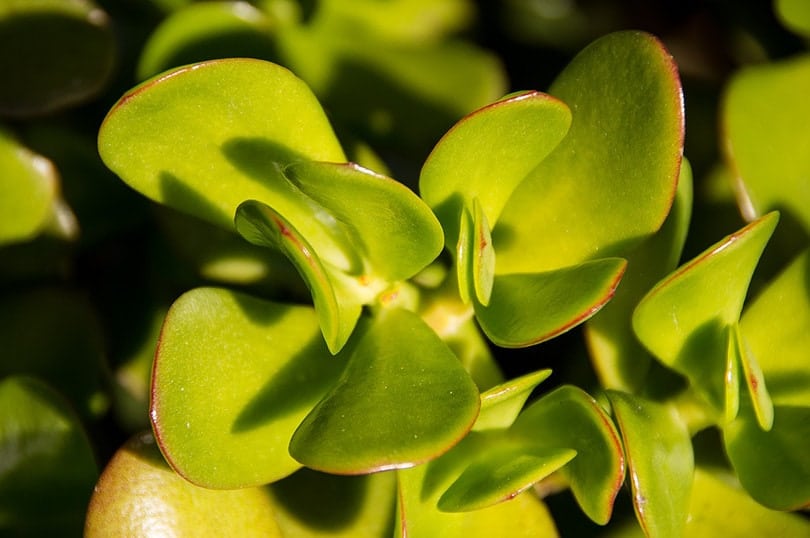
Jade plant, also known as money plant or money tree, is a succulent with tiny pink and white flowers. When chewed, the jade plant can cause vomiting , depression, and incoordination in your cat. Surprisingly, the reasons are unknown, according to the ASPCA.
- 15. Kalanchoe
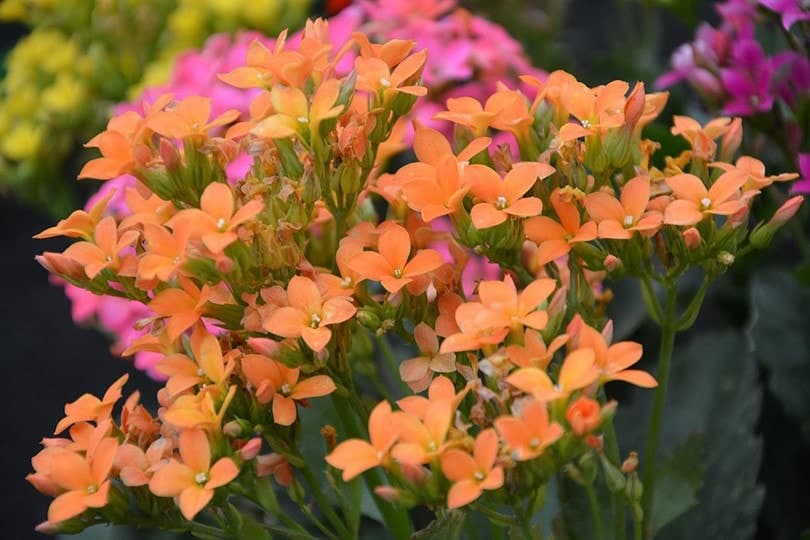
Kalanchoe is a gorgeous houseplant with hundreds of flowers of various colors. However, all parts of the plant are toxic, causing mild to severe symptoms. Issues like abnormal heart rhythms and life-threatening high potassium levels can occur in extreme cases.

Now you know 15 plants to avoid as you fill your home with gorgeous foliage. The thing about this list is that some plants can still be ok to keep in your home if you can find a location your cat will have difficulty reaching! You have to be strategic about where you place the plant .
Other plants should be avoided entirely, like lilies and sago palms. But don’t let this discourage you. Plenty of cat-friendly plants exist , ready to fit snugly on your bedroom shelf.
You might also like:
- 8 Cleaning Products Toxic to Cats: Vet Approved Facts & Toxicity Explained
- What Flowers Are Dangerous to Cats? 7 Vet-Verified Threatening Plants
- VCA Hospitals
- Whole Pet Clinic
Featured Image Credit: StockSnap, Pixabay
How useful was this post?
Click on a star to rate (you can leave written feedback after clicking submit)
Help us improve Catster for pet parents!
Your feedback really matters.
What did you like about this post? Also how can we improve it?
About the Author
Cassidy Sutton
Cassidy's journey from vet tech and professional pet sitter to pet writer showcases her lifelong passion for animals, both domestic and wild. Throughout the years, she has cared for many pets and enjoys writing about the animal-human bond. She and her husband have settled in Wichita, where they live with their German Shepherd, Raven, two cats, Lucy and Strudel, and a small flock of backyard chickens.
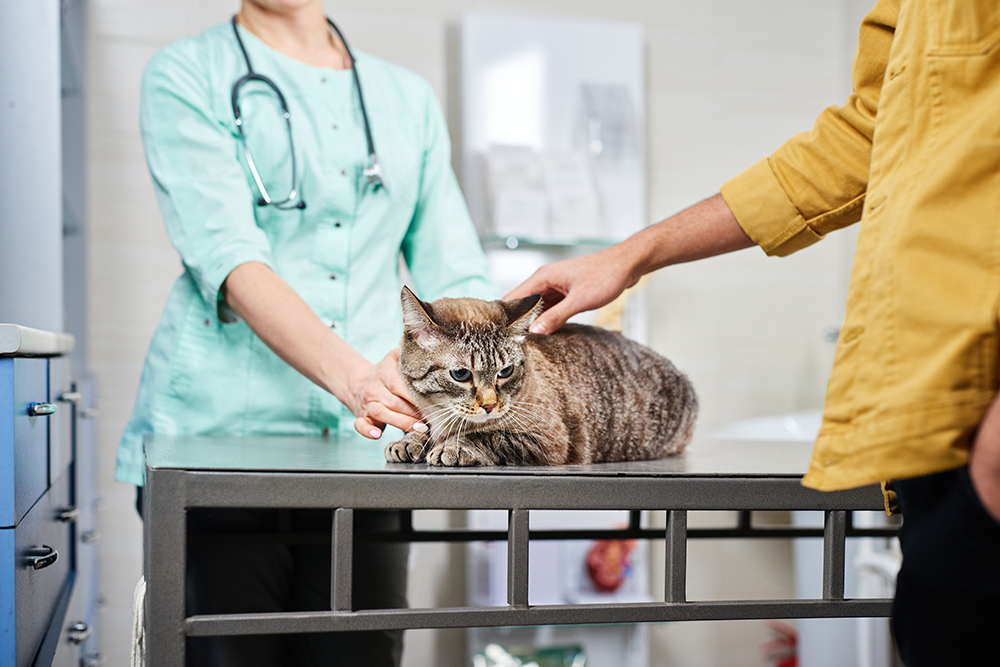
Bone Marrow Cancer in Cats: Our Vet Discusses Signs, Causes & Treatment
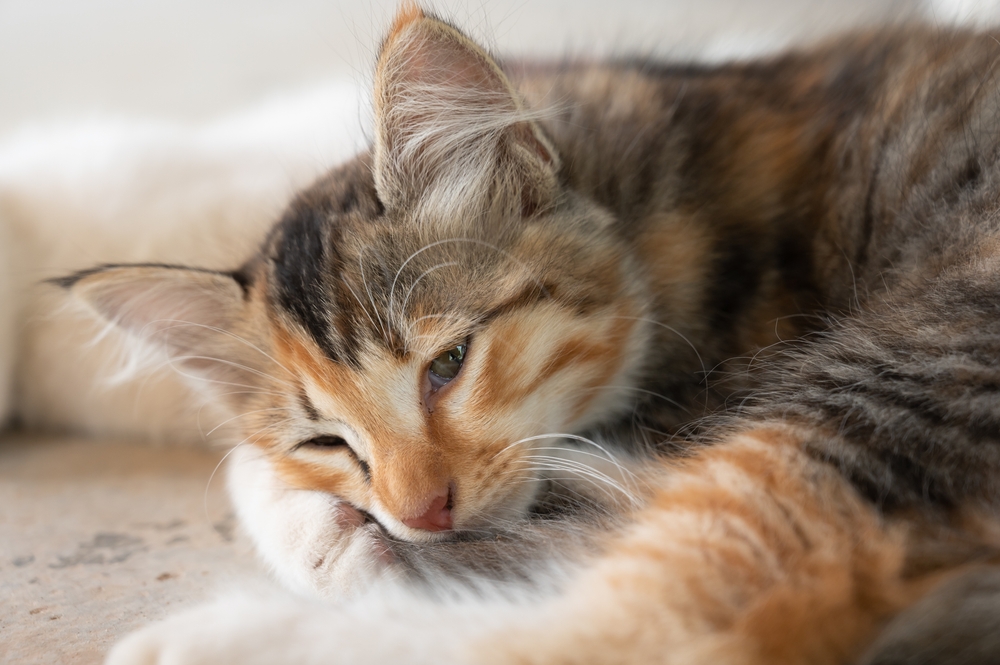
Multiple Myeloma in Cats: Our Vet Explains Signs, Causes & Treatment

How to Bandage a Cat Paw: 4 Vet-Approved Tips
Leave a reply cancel reply.
You’re very welcome to leave a comment or question. Please know that all comments must meet our community guidelines, and your email address will NOT be published. Let’s have a positive and constructive conversation.

Get Catster in your inbox!

Please Don’t Force Your Cat Up a Mountain

Small Animal Specialist Hospital (SASH) Vets Australia: Heroes of The Pet World
© pangolia pte. ltd. all rights reserved..


Toxic Plants for Cats
The following plants can be toxic to cats if ingested. If you think your pet may have ingested any of the plants on this list, contact your veterinarian immediately or seek emergency medical care.
ASPCA Animal Poison Control Center Phone Number: (888) 426-4435 Aconite Acorns Aloe Angle Trumpet Arrowgrasses Asparagus Fern Atropa Crocus Azalea Baby’s Breath Baneberry Bird-of-Paradise Black Locust Bloodroot Box Buckeye Buckthorn Buttercup Caladium Carolina Jessamine Castor Bean Chinaberry Tree Chinese Lantern Chokecherry Christmas Berry Christmas Rose Chrysanthemum Coleus Common Privet Corn Cockle Corn Plant Cowbane Cow Cockle Cowslip Creeping Charlie Daffodil Daphne Dieffenbachia Dracaena Dumbcane Dutchman’s Breeches Easter lily Elderberry Elephant’s Ear English Ivy European Bittersweet False Flax False Hellebore Pennycress Ficus Field Peppergrass Foxglove Gardenia Geranium Gladiola Holly Horse Chestnuts Horse Nettle Hyacinth Iris Jade Plant Jerusalem Cherry Jimsonweed Kalanchoe Laburum Lantana Larkspur Laurels Lily of the Valley Lupines Manchineel Tree Matrimony Vine Mayapple Milk Vetch Mistletoe Monkshood Moonseed Morning Glory Mountain Mahogany Mushrooms Mustards Narcissus Nicotiana Nightshade Norfolk Pine Oaks Oleander Peony Philodendron Pokeweed Poinsettia Poison Hemlock Potato Pothos Rattle Box Rhododendron Rhubarb Rosary Pea Rubber Plant Sago Palm Sanseverria Sedum Shamrock Skunk Cabbage Smartweeds Snow-on-the-mountain Sorghum Spider plant Star of Bethlehem Syngonium Tomato Trumpet Lily Umbrella tree (Schefflera) Velvet Grass Vinca Vine Wandering Jew Wild Black Cherry Wild Radish Wisteria Woody Aster Yellow Jessamine Yellow Oleander Yellow Pine Flax Yew Yucca
Nontoxic Plants The following plants will not harm your cat if ingested and are safe to have around your yard and inside your home. African Violets Air Plant Aluminum Plant Boston Fern Cactus Dandelions Ecxheveria Forsythia Gloxinia Hibiscus Hollyhock Honey Plant Impatiens Mountain Ash Palms (all) Peperomia Petunia Piggyback Rose Snapdragons Swedish Ivy Zebra Plant Zinnia
For a more complete list and pictures, visit the ASPCA Websites at https://www.aspca.org/pet-care/animal-poison-control/toxic-and-non-toxic-plants.
Recent Articles
Thank you for considering welcoming this special cat into your home. This fact sheet will help to answer any questions you may have about this condition.
What is FIV?
Rabies is a preventable viral disease that affects mammals and is usually transmitted to people through a bite or scratch from an infected animal. The virus attacks the nervous system, and by the time that visible signs appear, the disease is usually fatal.
It is very possible that during the course of your animal’s lifetime, he or she may be injured in a way that requires immediate assistance. You may also encounter a stray animal who is hurt. When a situation like this arises, it is important to be well-informed.
Before bringing home your new feline friend, make sure your home is prepared for your new cat’s curiosity.
Top of page
- Board & Senior Staff
- Mission, Vision, Values
- Public Information
- Careers & Internships
- Recent Media
- News and Publications
- Available Animals
- Recent Adoptions
- About Spay/Neuter
- Wellness Care
- Make an Appointment
- End of Life Services
- Virtual Story Time With Muffin
- Dog Day Out
- Adult Programs
- Group Programs
- Education Programs
- Rescue Partnerships
- Open Door Monthly Giving
- Planned Giving and Bequests
- Other Ways to Give
- Donate Items
- Become a Volunteer
- Adult Volunteers
- Kids and Family Volunteers
- Teen Volunteers
- Group Volunteers
- Volunteer Stories
- Volunteer Resources
- Volunteer FAQ
- Foster Candidates
- About Fostering
- Become a Foster
- Adoption Ambassadors
- Foster Resources
- Life Time Fall Half Marathon
- Clear The Shelters
- Kitty and Puppy Party
- Pour Your Heart Out
- Pet Care Library
- Local Resources
- Hours & Locations
- Report Abuse

IMAGES
VIDEO
COMMENTS
Also known as Tradescantia, the Wandering Jew Plant and cats do NOT get along. Source: J. McPherskesen. Symptoms of Wandering Jew Poisoning in Cats. According to the ASPCA, which has a wonderful list of toxic and non-toxic plants, the most obvious symptom your cat (or dog) has been affected by wandering jew plants is a dermatitis-like skin irritation developing.
The short answer is yes, Wandering Jew plants are toxic to cats. These plants contain insoluble calcium oxalate crystals, which can cause irritation and inflammation in the mouth, throat, and digestive tract if ingested by cats. Symptoms of ingestion may include drooling, vomiting, difficulty swallowing, and potentially more severe reactions ...
According to the ASPCA (American Society for the Prevention of Cruelty to Animals), the wandering jew can be toxic to cats, dogs, and horses as it contains calcium oxalate crystals in leaves and stems. It may not seriously injure your pet but still chewing it can cause discomfort. This mildly toxic plant can cause skin or bowel irritation in cats.
Yes, Wandering jew is a midly toxic plant for cats and other pets. Although it is generally not life-threatening, cats that consume the sap of wandering jew plants can experience skin irritation and bowel irritations causing vomiting or diarrhea. Having plants and pets in the same house makes you wonder whether they are safe companions.
Wandering Jew is a common house plant that can cause mild toxicity in cats and dogs. The plant contains calcium oxalate crystals, which can cause skin or bowel irritation if ingested. While the plant is mildly toxic, it's important to note that it can still cause symptoms in pets. Although the plant might sedate cats, they might also display ...
The fact is, Wandering Jew (and several similar poisonous plants in this genus) contain very irritating sap, while the plants sharing their common name (Tradescantia Virginiana and Tradescantia ohiensis) have edible flowers, stems, and leaves. These edible plants may also be called Blue jackets or Day flowers. Table Of Contents.
If you love house plants but also have house cats, it's crucial to ensure that the former isn't toxic to the latter. The wandering jew-- formally known as Tradescantia fluminensis and also known as speedy Henry -- will harm your feline friends. So it's best to leave this one back at the greenhouse.
The words 'poisonous plant' and 'cat' in the same . sentence will naturally worry any cat owner. There . are many plants out there that are considered ... (Wandering Jew plant, Speedy Henry) Yucca (Asparagaceae family, Agavoideae) Zamioculcas zamiifolia (ZZ plant, Zanzibar . gem, Fern arum) Caution advised.
Inch Plant. Additional Common Names: Speedy Henry. Scientific Name: Tradescantia flumeninsis. Family: Commelinaceae. Toxicity: Toxic to Dogs, Toxic to Cats, Toxic to Horses. Clinical Signs: Dermatitis. If you suspect your pet may have ingested a potentially toxic substance, call the APCC at (888) 426-4435 or contact your local veterinarian as ...
The Wandering Jew is poisonous for both cats and dogs. Typical symptoms include conjunctivitis, dermatitis, itching of the skin, loss of fur and redness around the eyes. Wandering Jew is a perennial plant that is characterized with hairless stems and leaves, It has oval, dark green leaves and white flowers with 3 petals and are native to South ...
What is the most common type of Wandering Jew? The most common type of wandering Jew is Tradescantia zebrina, also known as the inch plant, purple-heart, or purple queen. This plant has distinctive purple and silver striped leaves and trailing stems. Is Wandering Jew poisonous to cats? Yes, wandering Jew plants are toxic to pets.
Answer: Yes, the Wandering Jew plant is toxic to cats if ingested. It can cause gastrointestinal upset, such as vomiting and diarrhea, as well as more severe symptoms in some cases. 2. Concern: What are the symptoms of Wandering Jew plant poisoning in cats? Answer: Symptoms of Wandering Jew plant poisoning in cats may include vomiting, diarrhea ...
Many common household plants are toxic to cats if ingested. This page contains a partial list of poisonous houseplants, as well as symptoms of poisoning in cats and other animals. ... Ivy is a no-no as too a plant called by various names, most common is wandering jew, with bright green leaves that spreads like a house on fire. Animals can lose ...
W andering Jew Plant Care. To keep your Wandering Jew plant thriving, ensure it receives bright, indirect sunlight. Keep it in average room temperatures of 60-75°F (16-24°C). Fertilize once a month during spring and summer. In winter, relocate the plant to a cooler area with temperatures of 54-59°F (12-15°C).
This well-known plant is part of the solanaceae family and is toxic due to the solanine. It's important to note that ripe fruit is non-toxic. Symptoms: Slow heart rate, dilated pupils, weakness, depression, severe gastrointestinal upset, inappetence, and hypersalivation. 15. Wandering Jew. Wandering Jew can also be known as speedy Henry.
Wandering Jew (Tradescantia zebrina) is a trailing evergreen perennial in its native habitat (USDA hardiness zones 9 through 12). Where it's not winter hardy, wandering Jew is grown year-round as a houseplant. Are wandering Jew plants toxic to cats and dogs? Wandering Jew is not considered outright toxic, but it can cause some skin irritation.
Fill a 6-inch to 1-gallon container that drains with a rich, well-drained potting mix. Water the soil to settle it. Make about a 2-inch indentation in the soil where you want to place the Wandering Jew cutting. Remove the bottom leaves from the cutting where you will be inserting it into the soil.
Tulips (Tulipa spp.): Tulips and tulip bulbs are toxic to dogs, cats and horses. They can cause significant stomach upset, depression and possible intestinal obstructions if large bulbs are ingested. Oleander (Nerium oleander): Oleander are beautiful flowering shrubs often used in landscaping, but for dogs, cats and horses, they carry the risk ...
Adam-and-Eve (Arum, Lord-and-Ladies, Wake Robin, Starch Root, Bobbins, Cuckoo Plant) | Scientific Names: Arum maculatum | Family: Araceae
Yes, wandering Jew plants are mildly poisonous to dogs. Wandering Jew, or Tradescantia, is a type of creeping plant that belongs to the Commelinaceae family. With about 85 climbing and trailing species, the wandering Jew is typically grown as indoor houseplants or as garden plants used for ground cover. Their leaves are thin, long, and pointed ...
Jade plant, also known as money plant or money tree, is a succulent with tiny pink and white flowers. When chewed, the jade plant can cause vomiting, depression, and incoordination in your cat ...
JADE PLANTS ARE VERY TOXIC TO CATS. My cat was recently ill for 2 weeks from eating the leaves of this plant. There is a lot of information on the web about the dangers of this plant, and it is listed as toxic to both cats and dogs by ASPCA. As others have noted, wandering jew is also toxic to cats and dogs.
The following plants can be toxic to cats if ingested. If you think your pet may have ingested any of the plants on this list, contact your veterinarian immediately or seek emergency medical care. ASPCA Animal Poison Control Center Phone Number: (888) 426-4435 Aconite Acorns Aloe Angle Trumpet Arrowgrasses Asparagus Fern Atropa Crocus Azalea Baby's Breath Baneberry Bird-of-Paradise Black ...